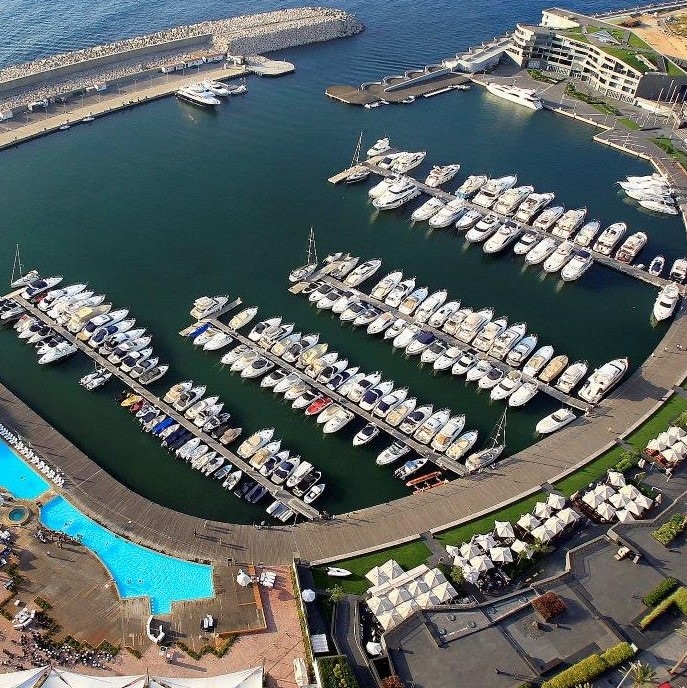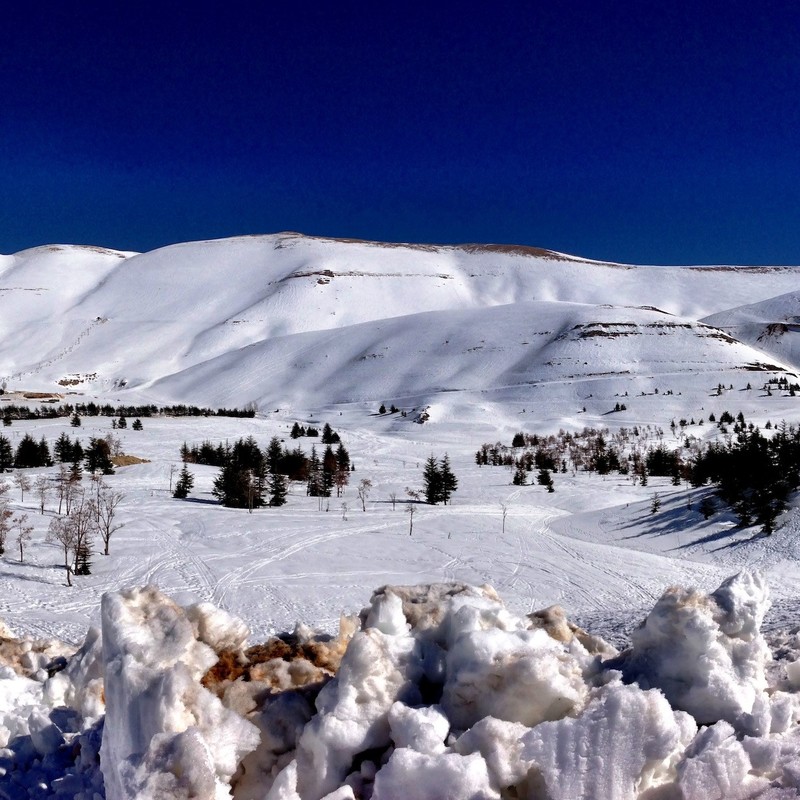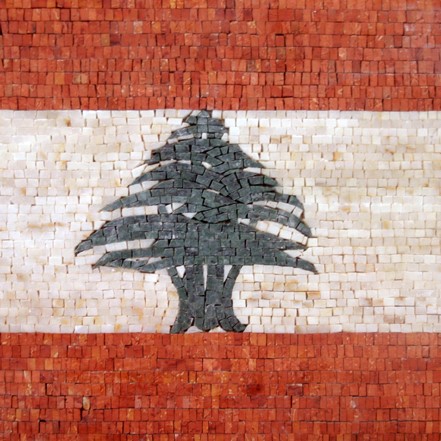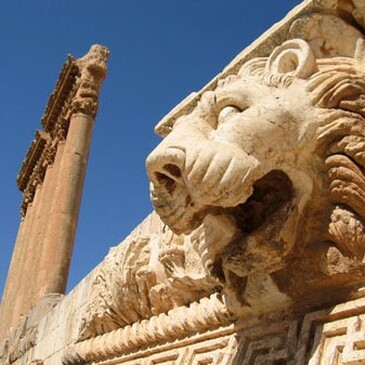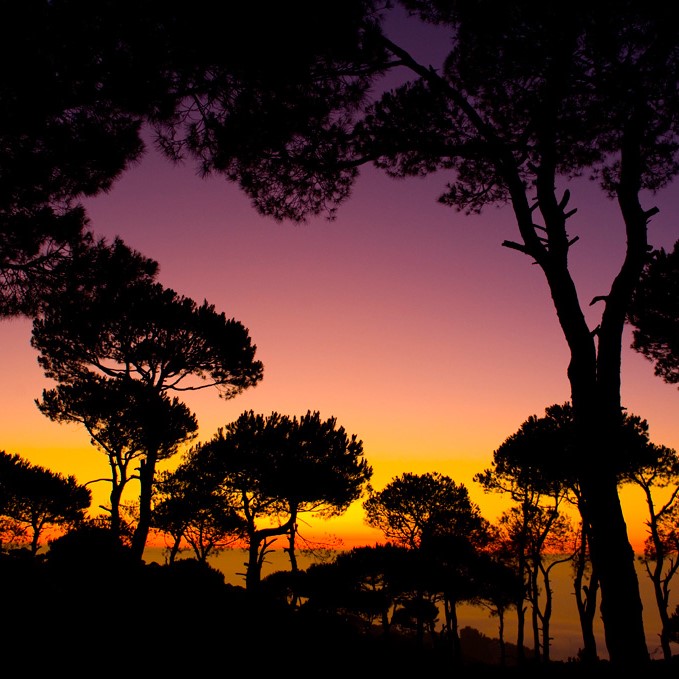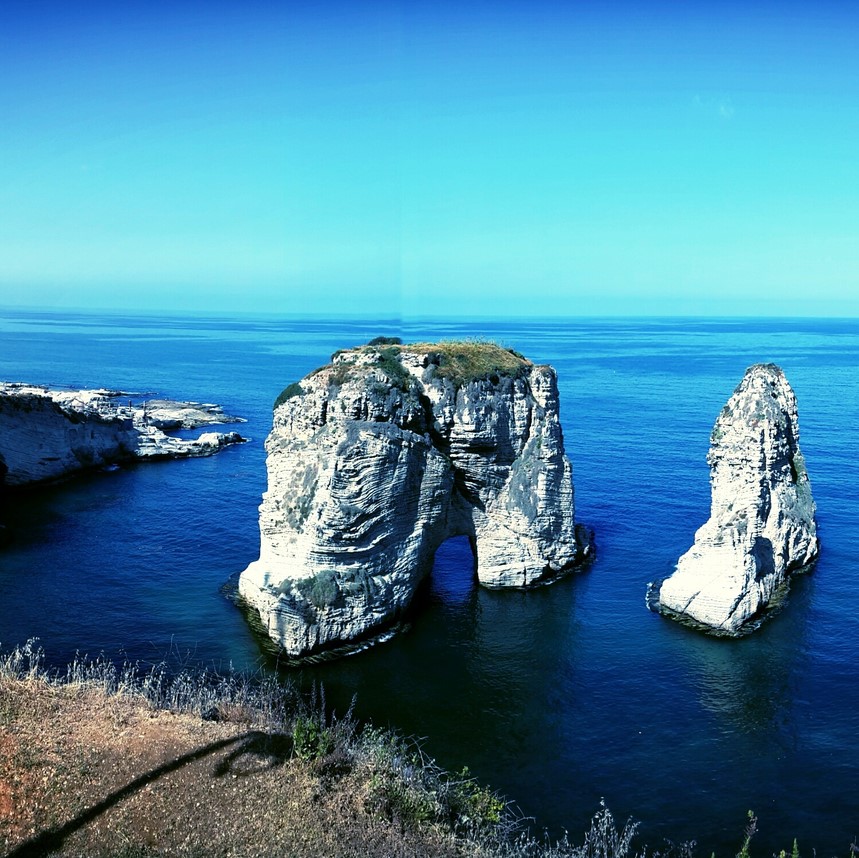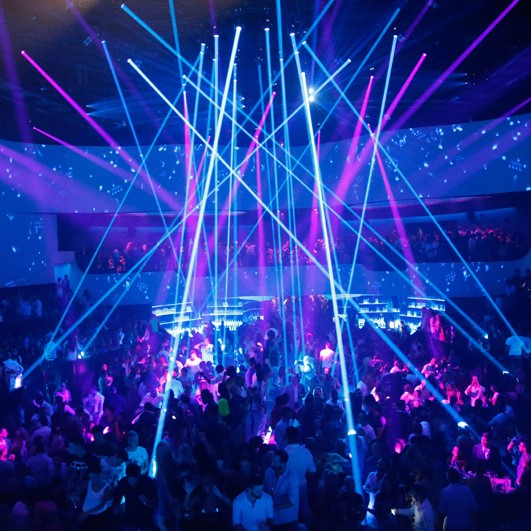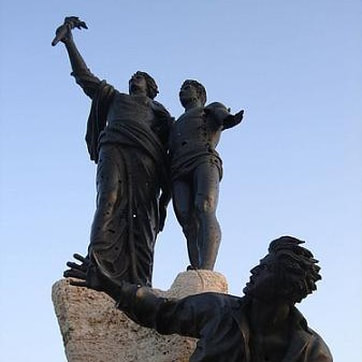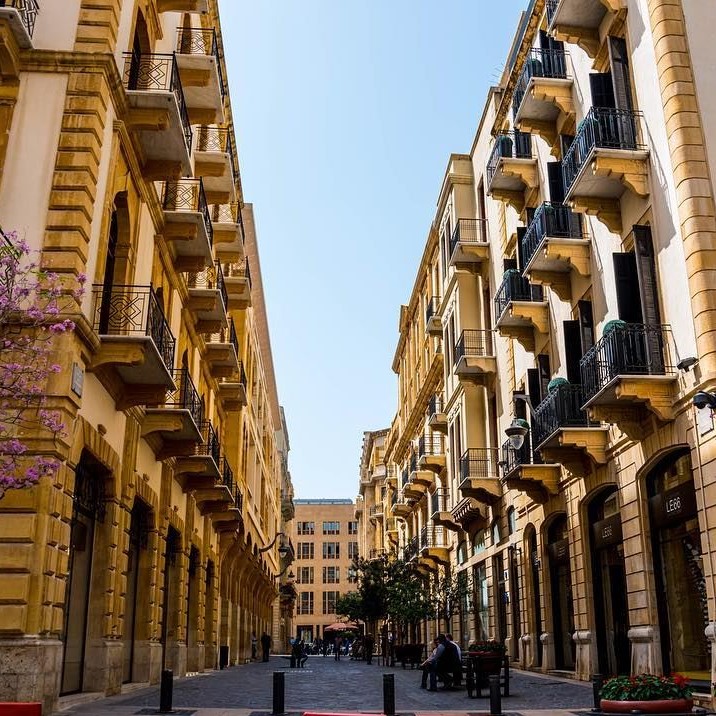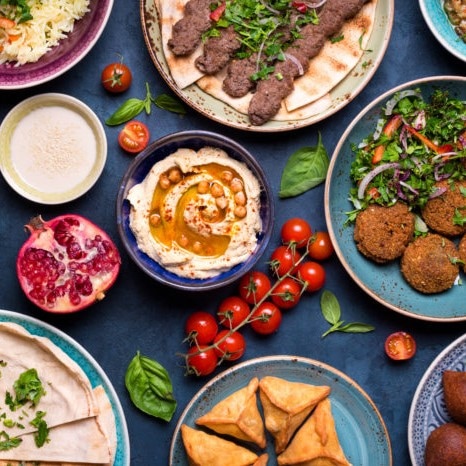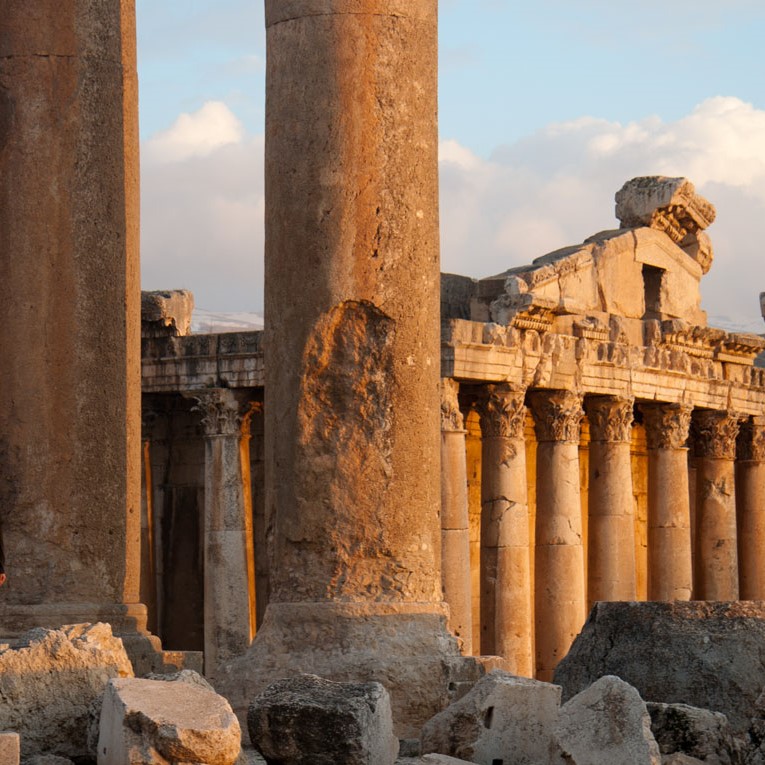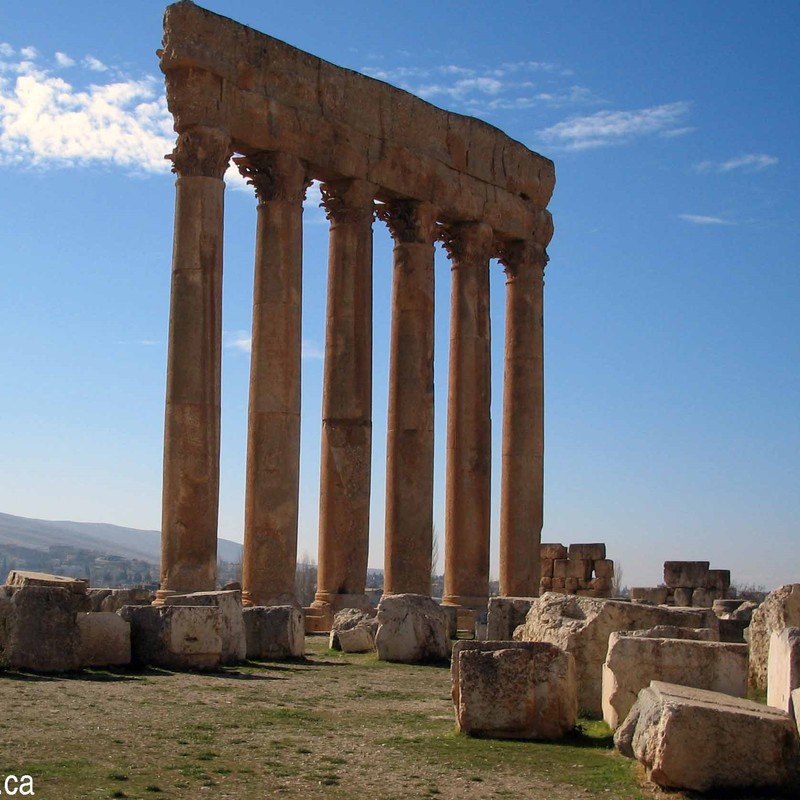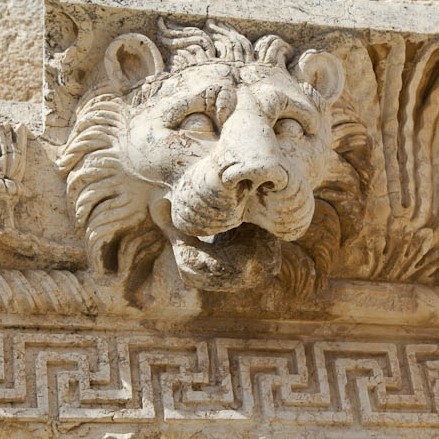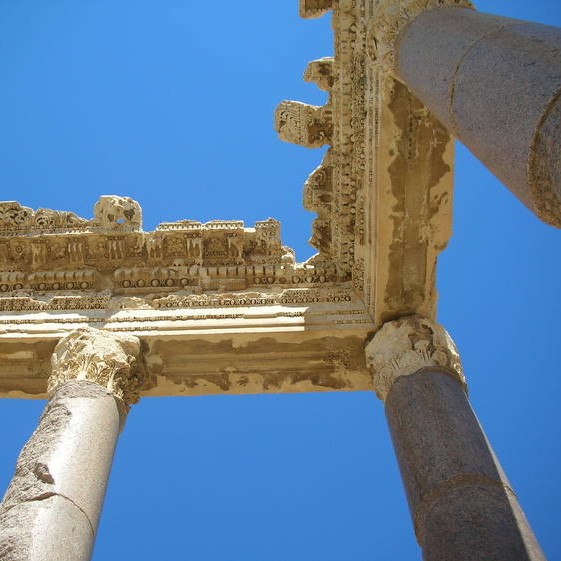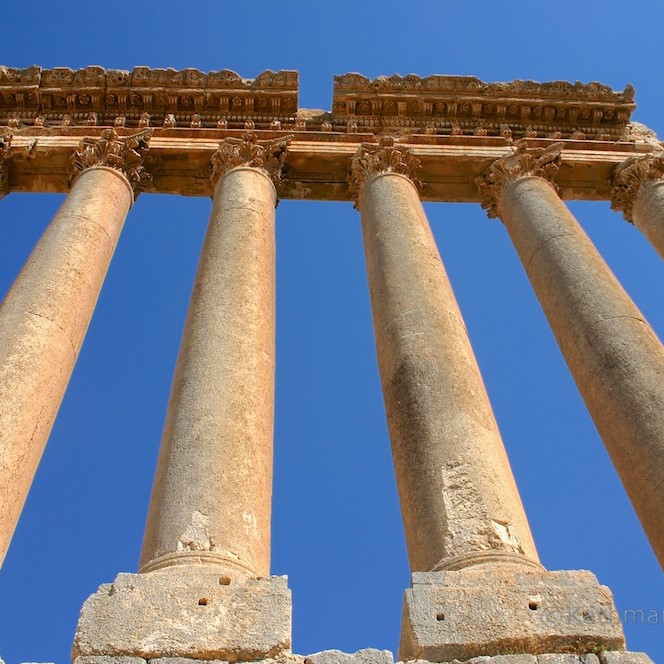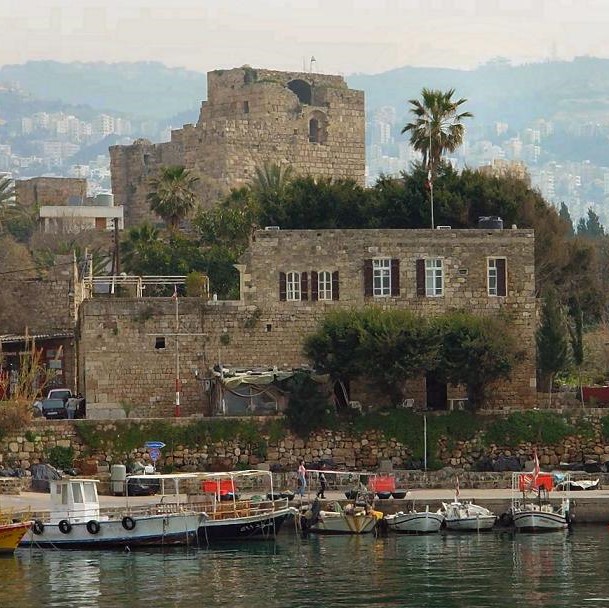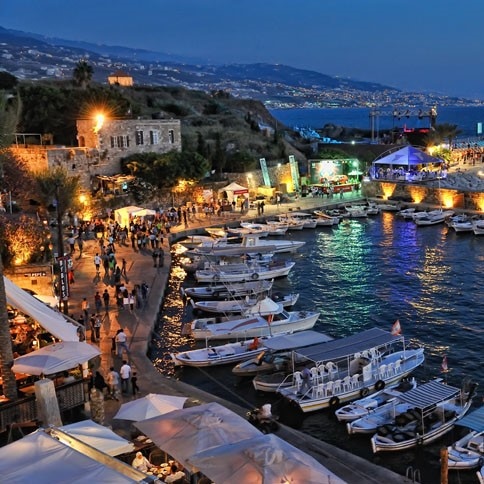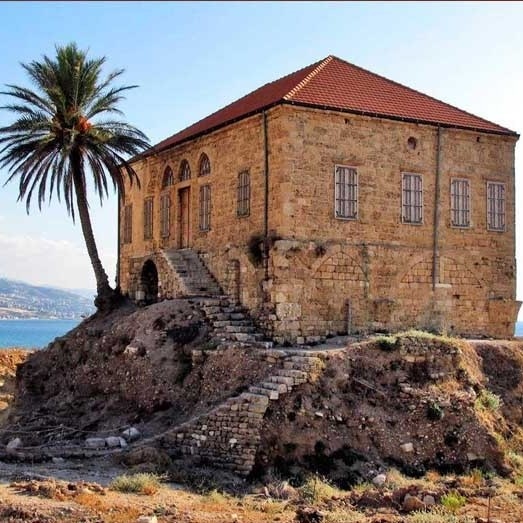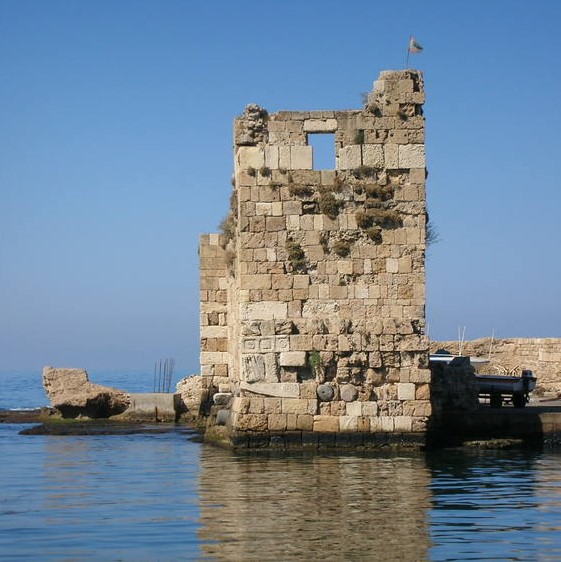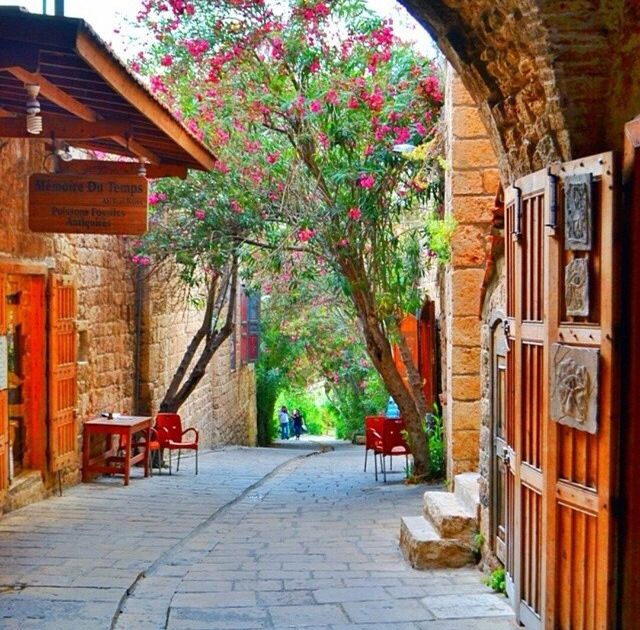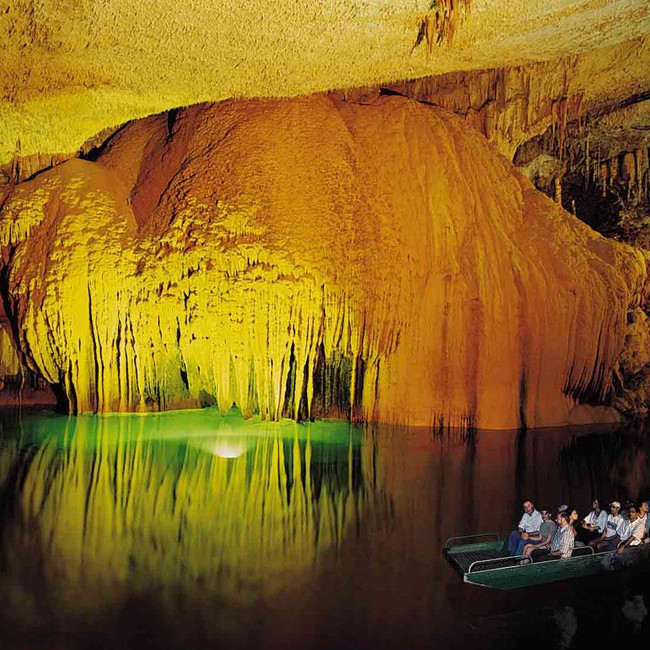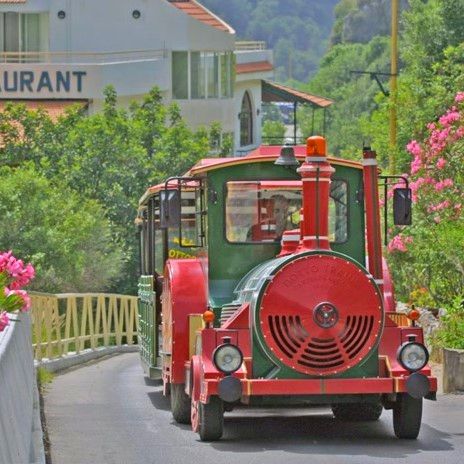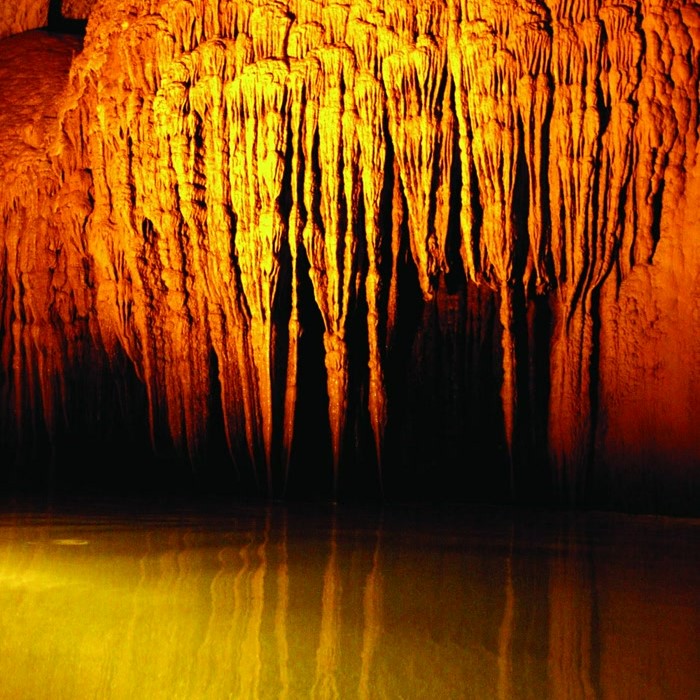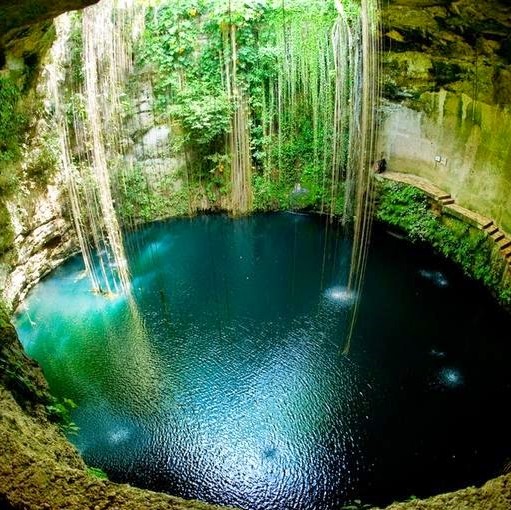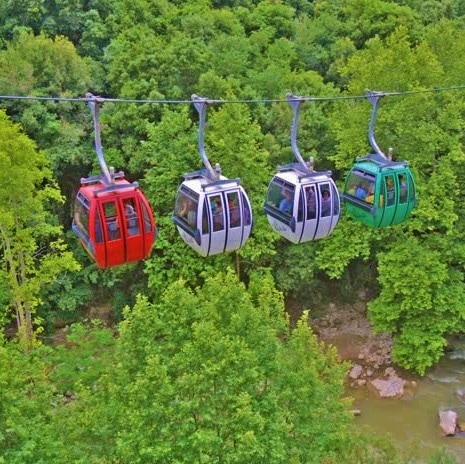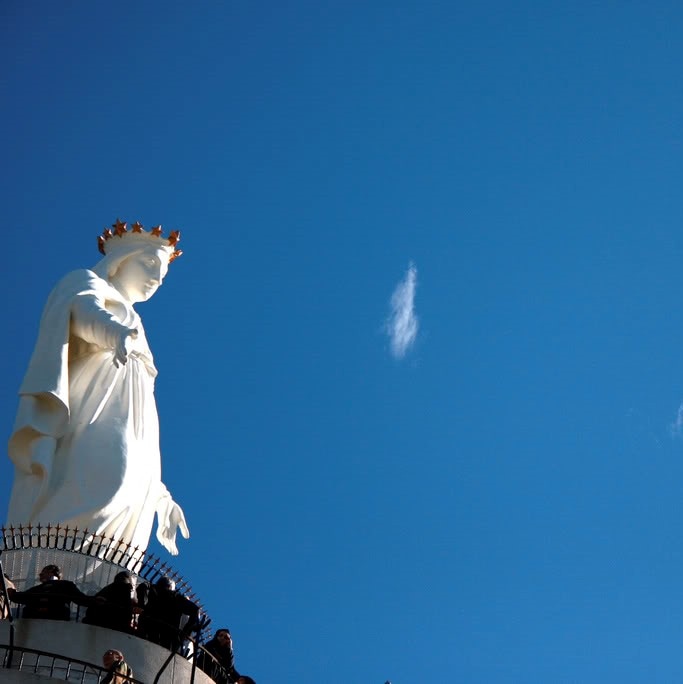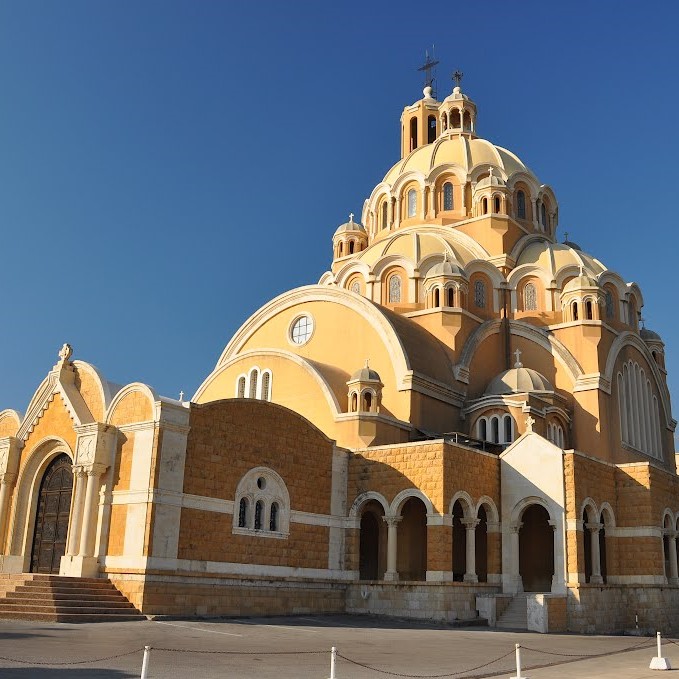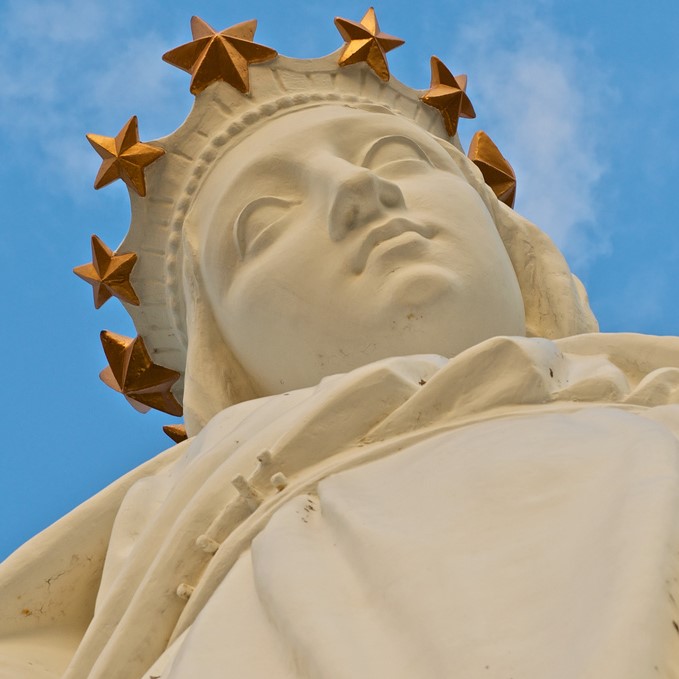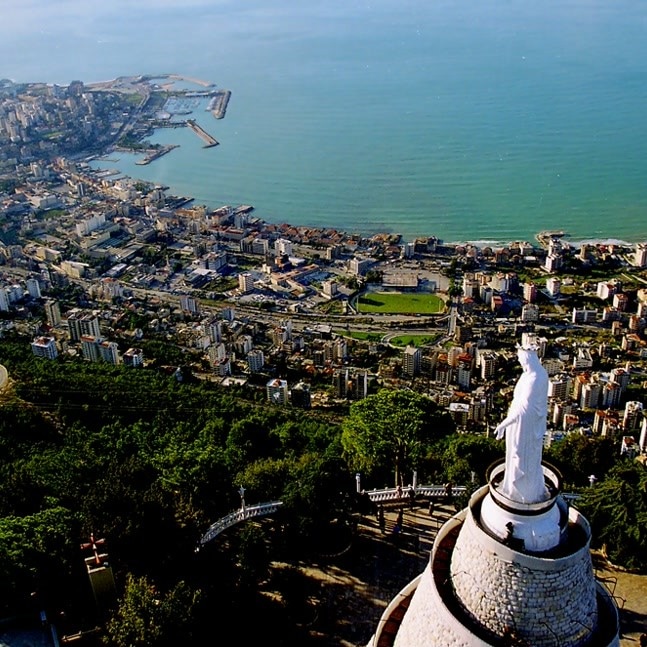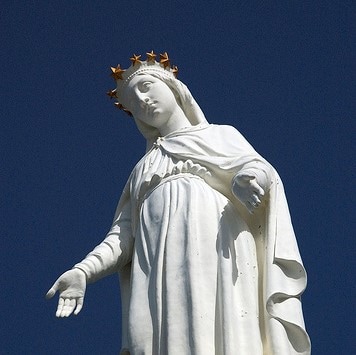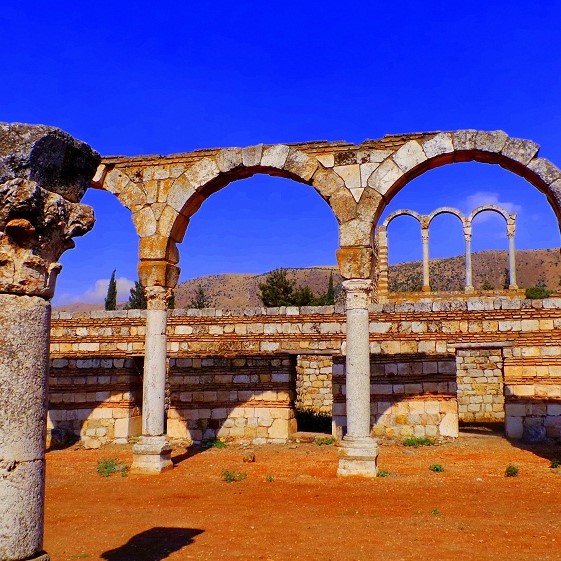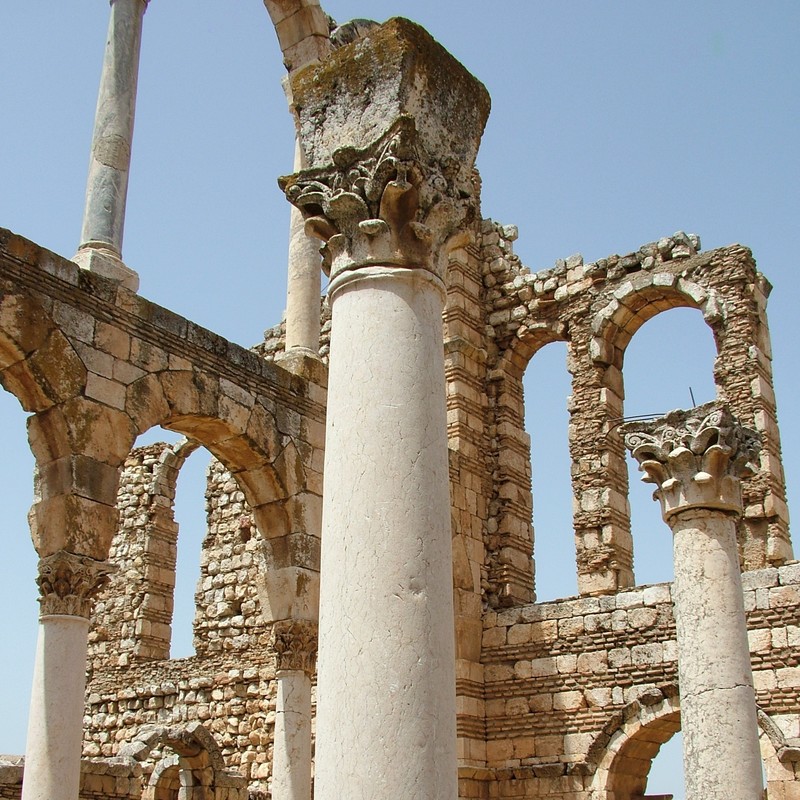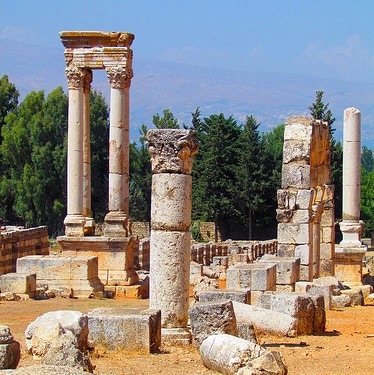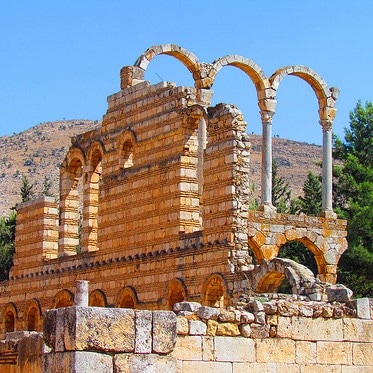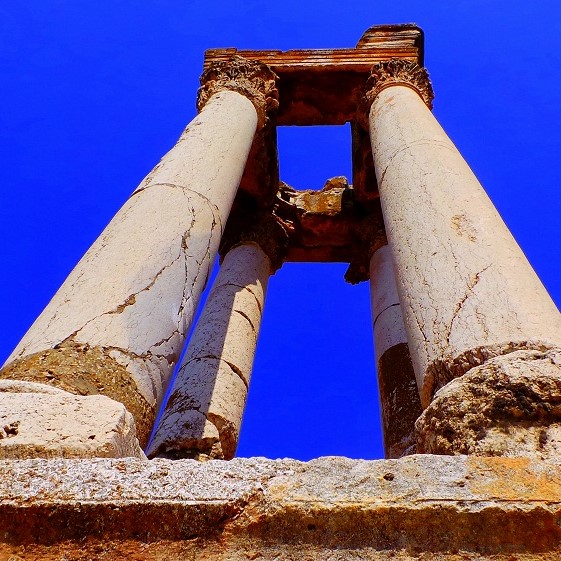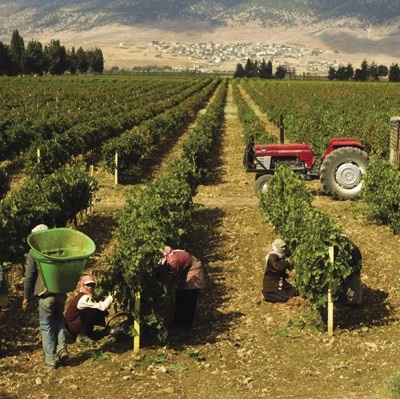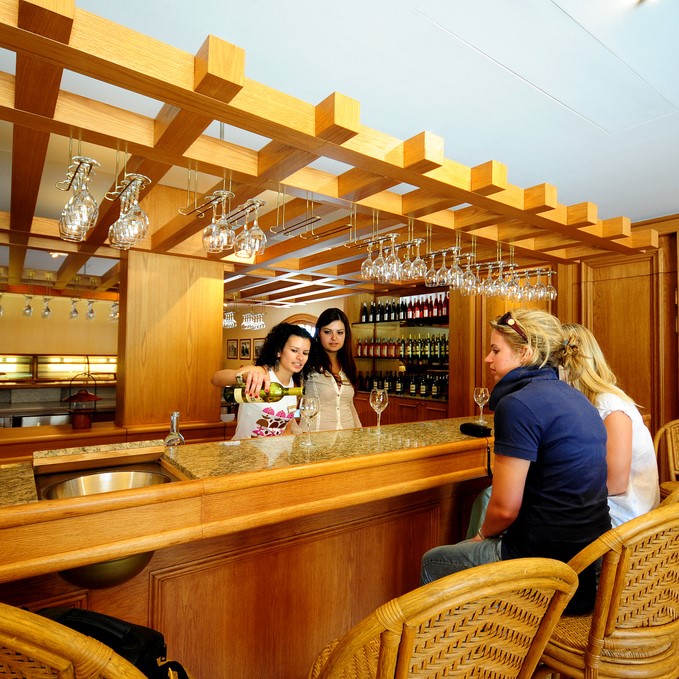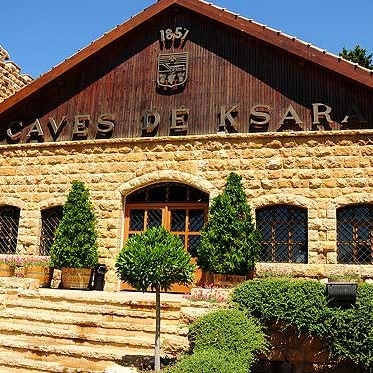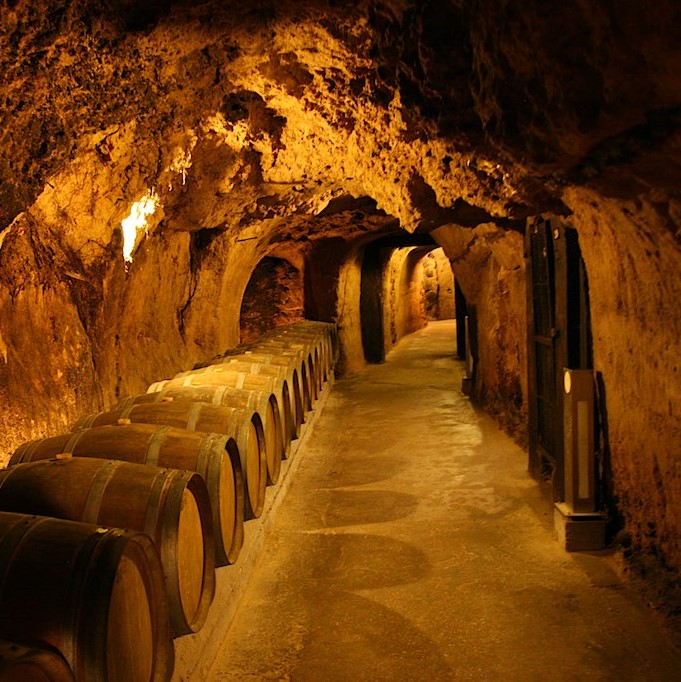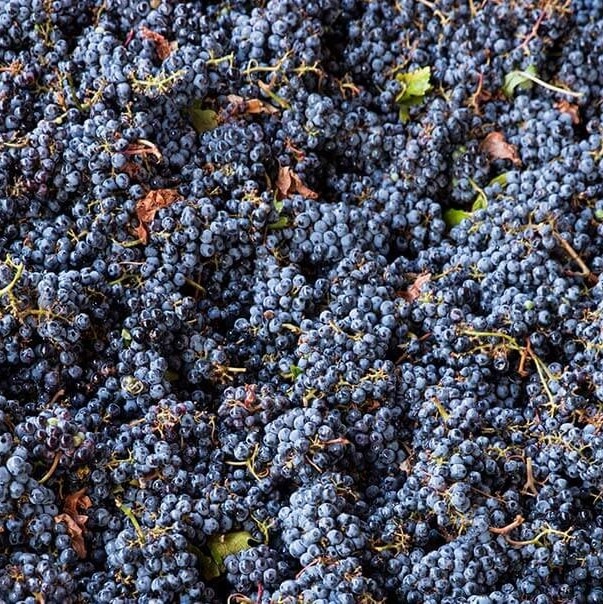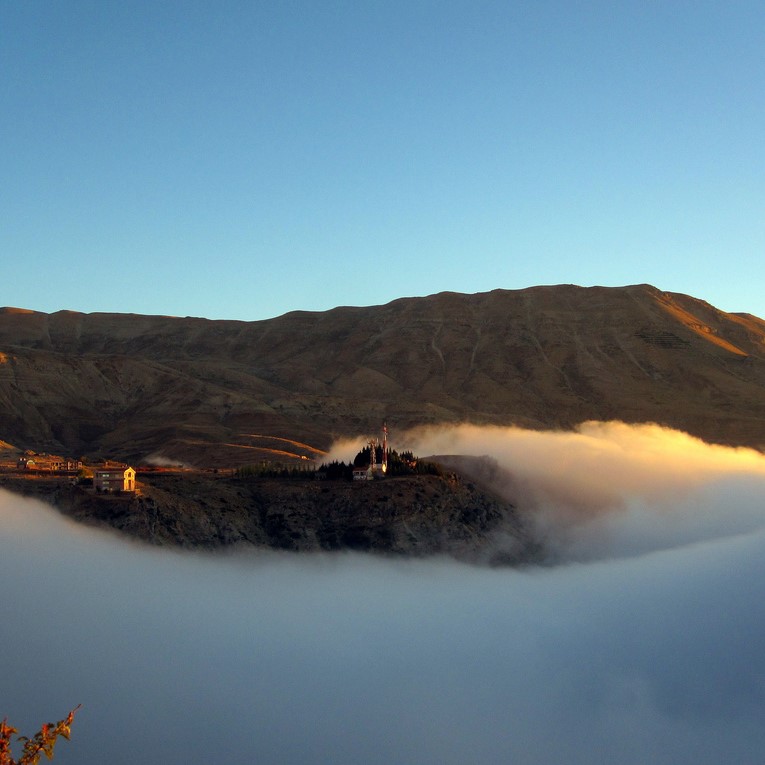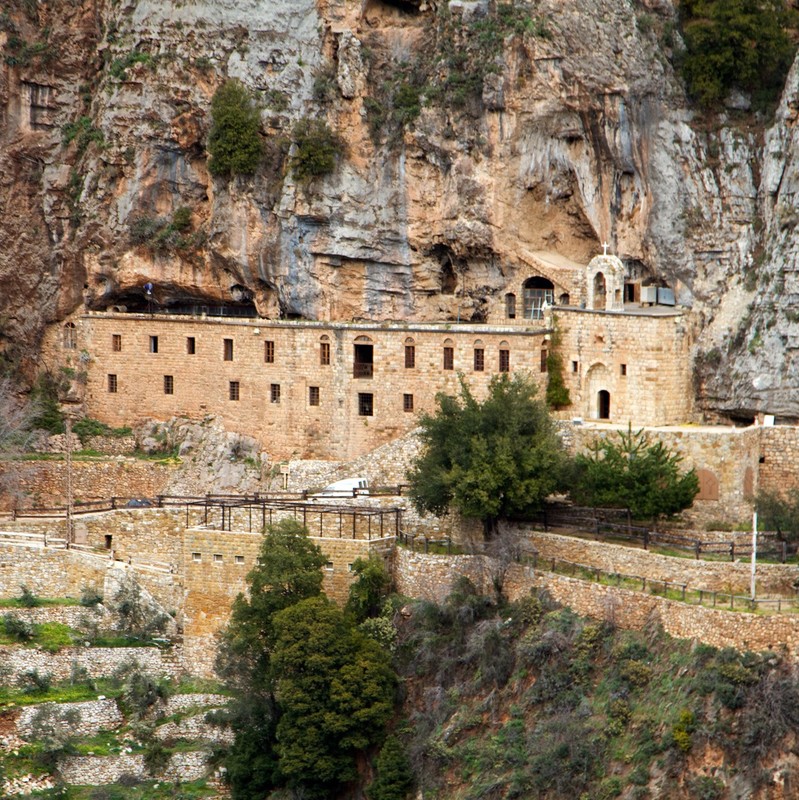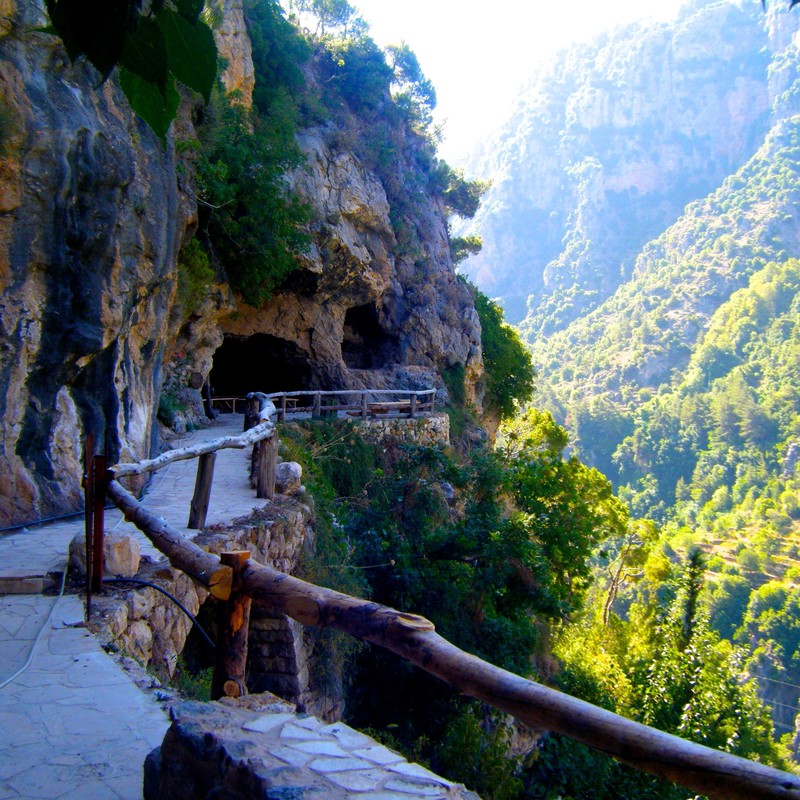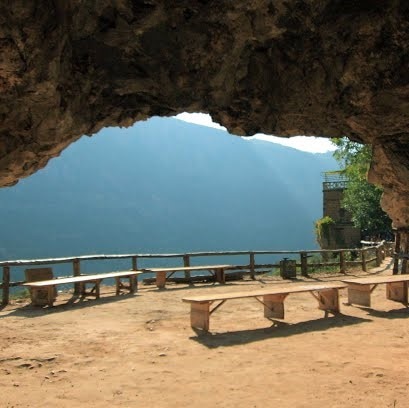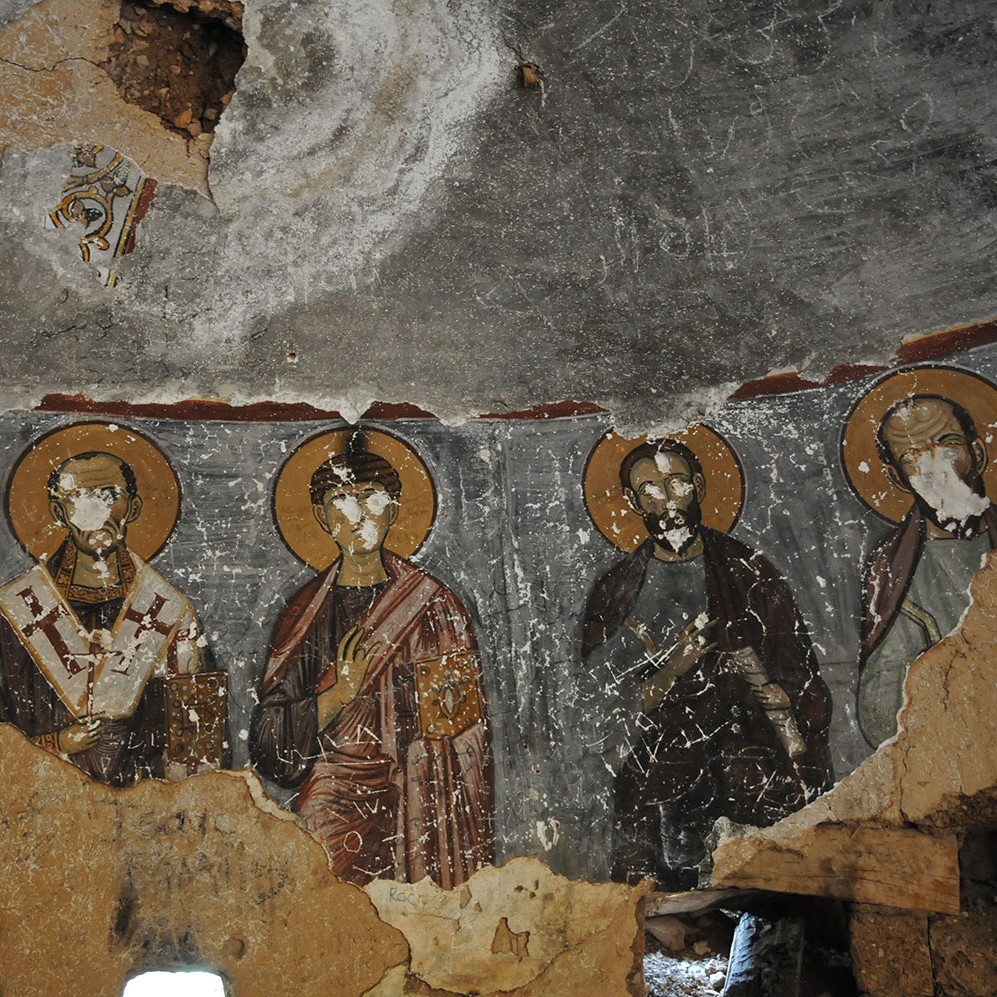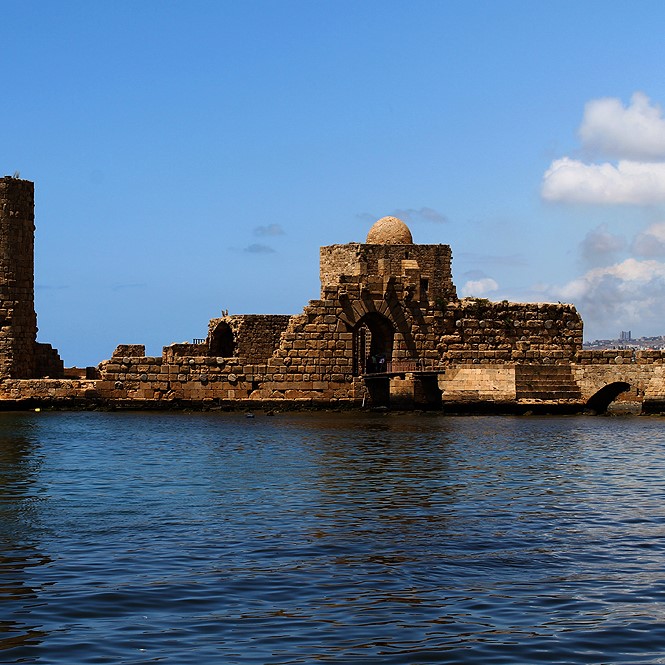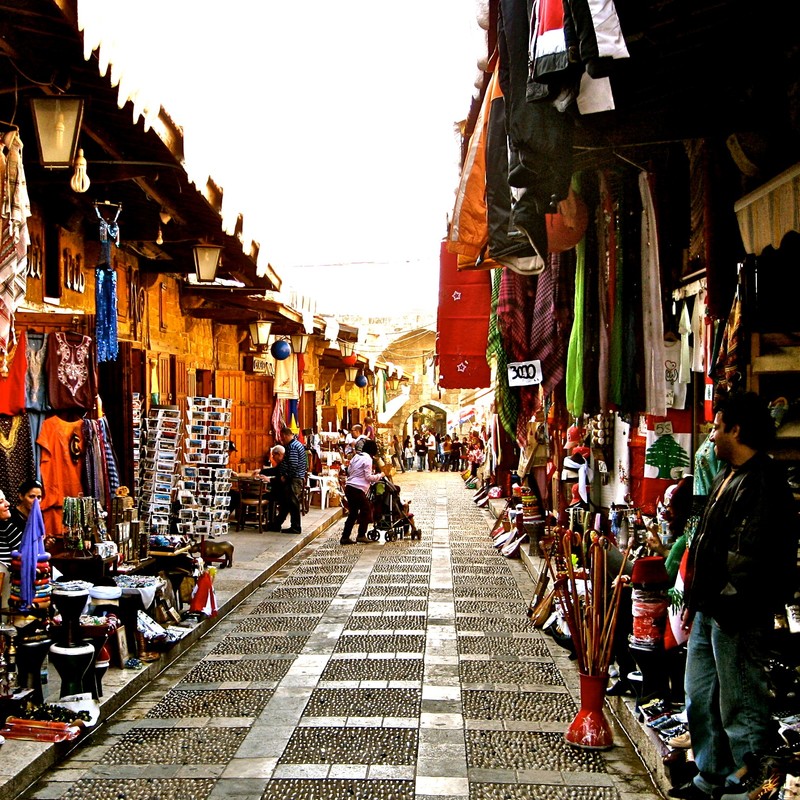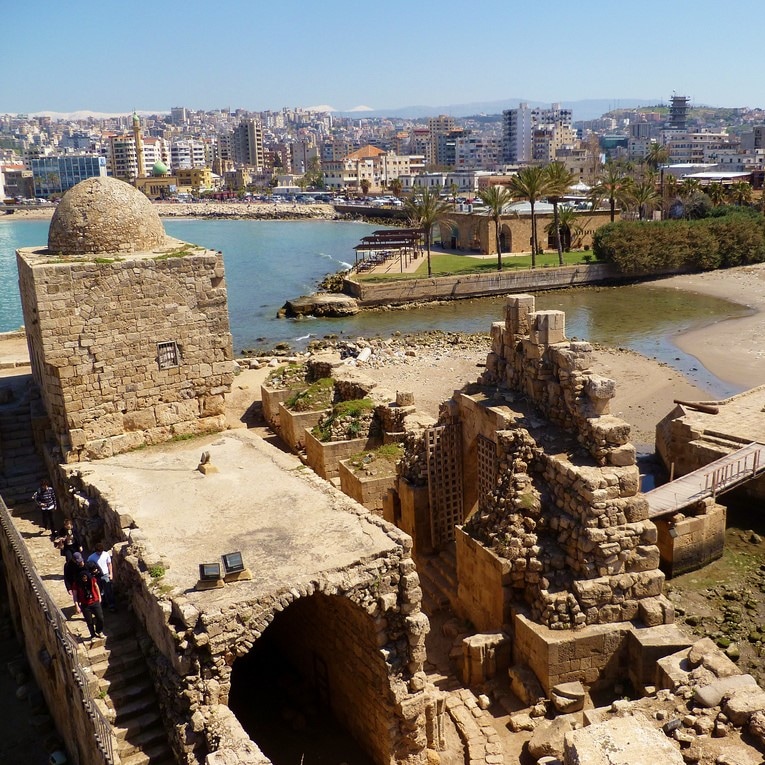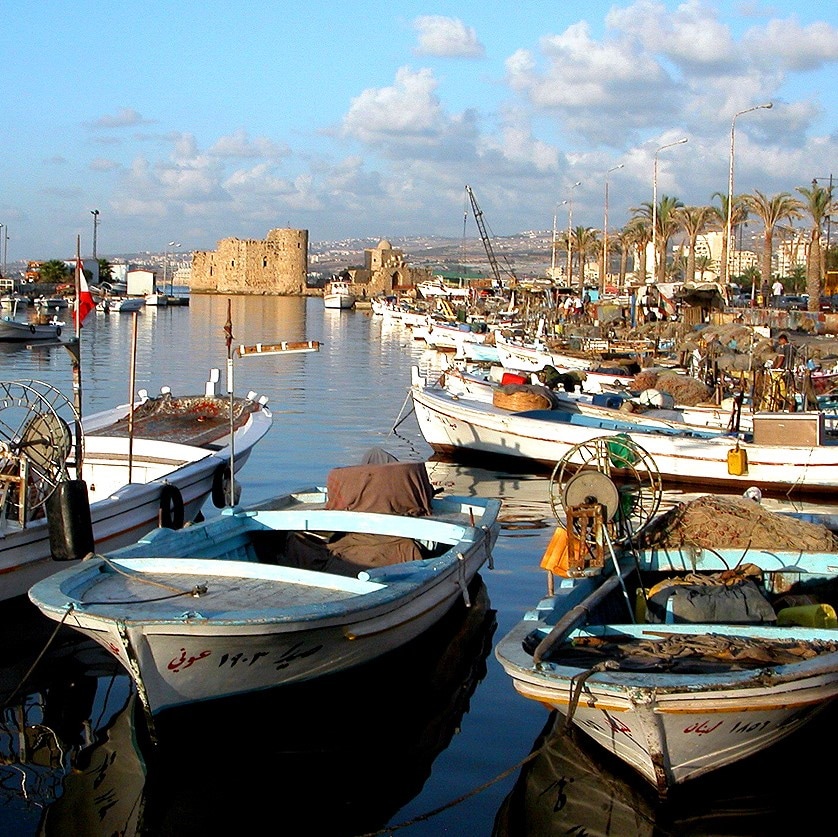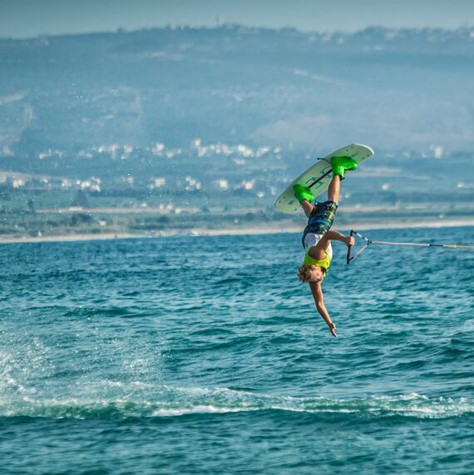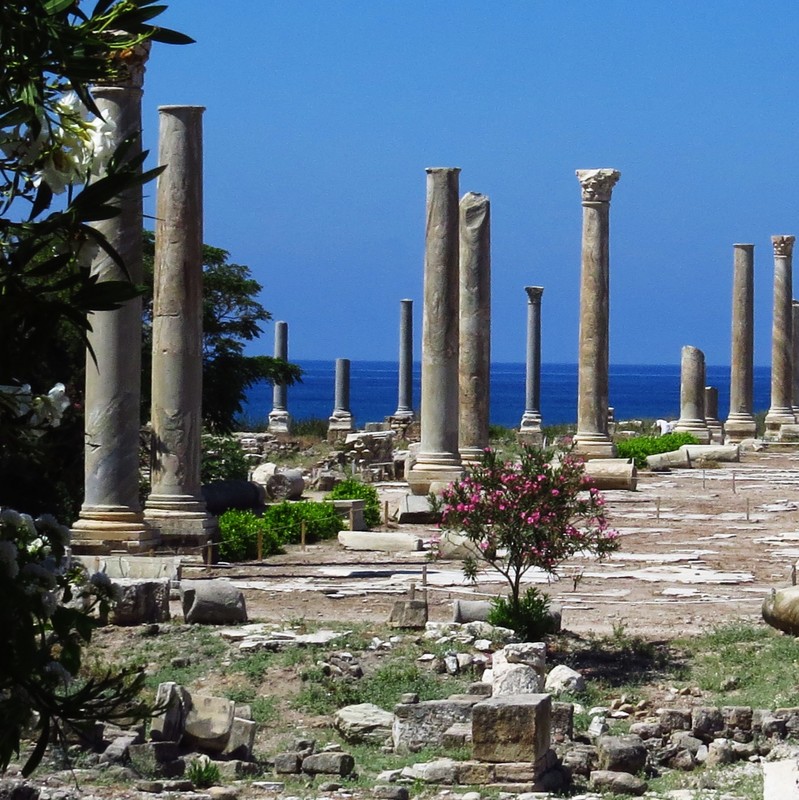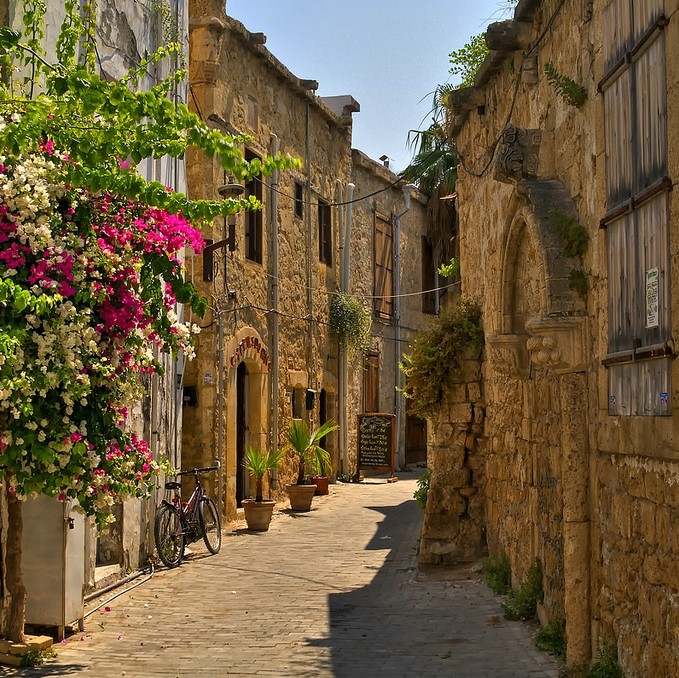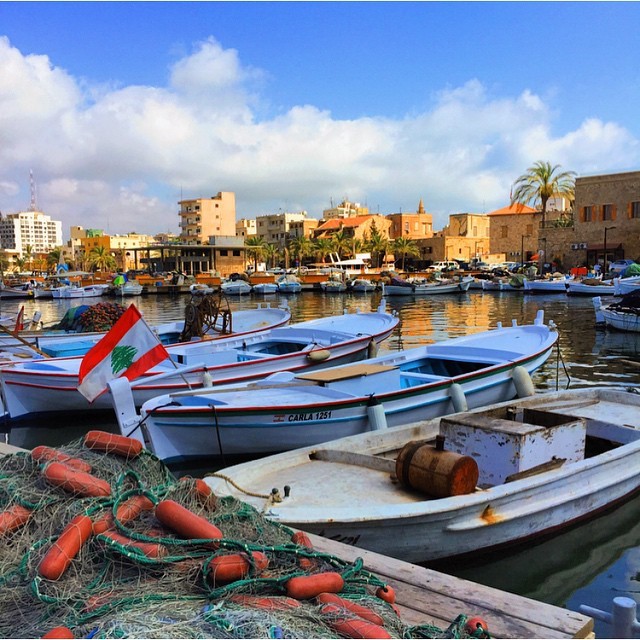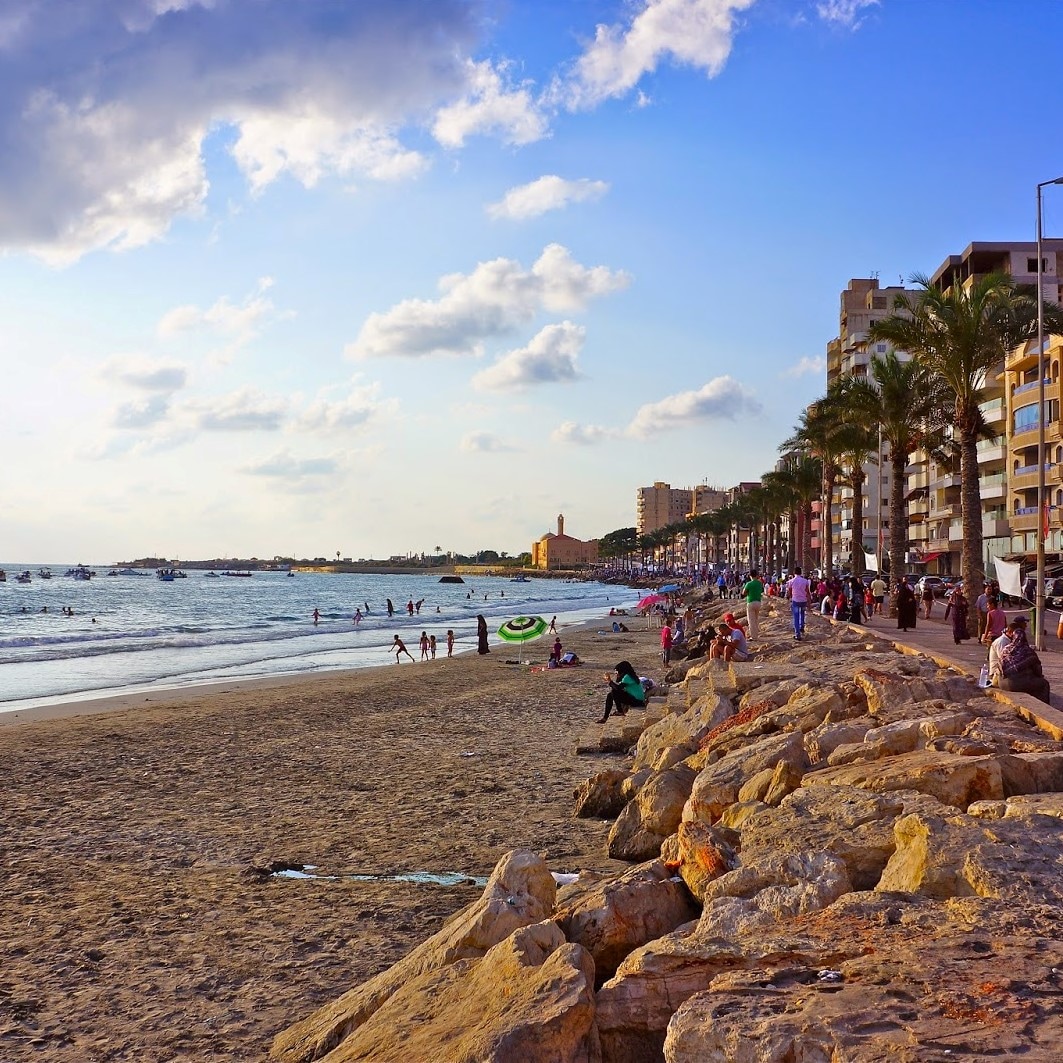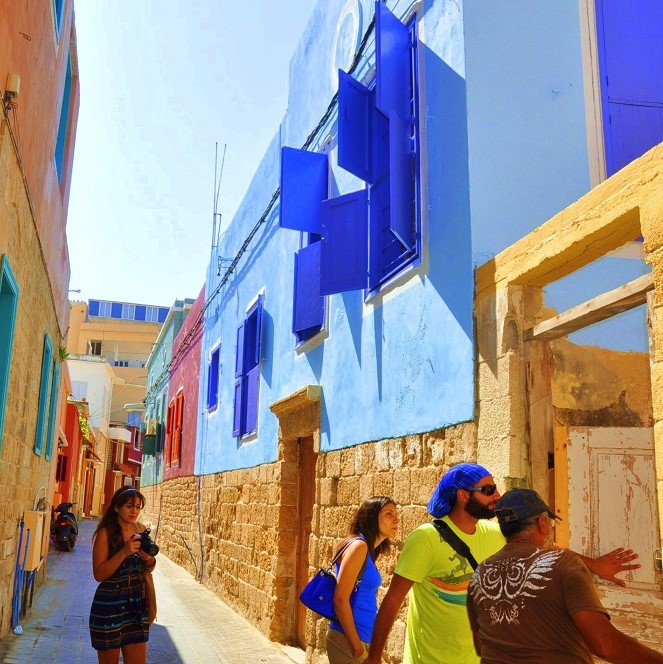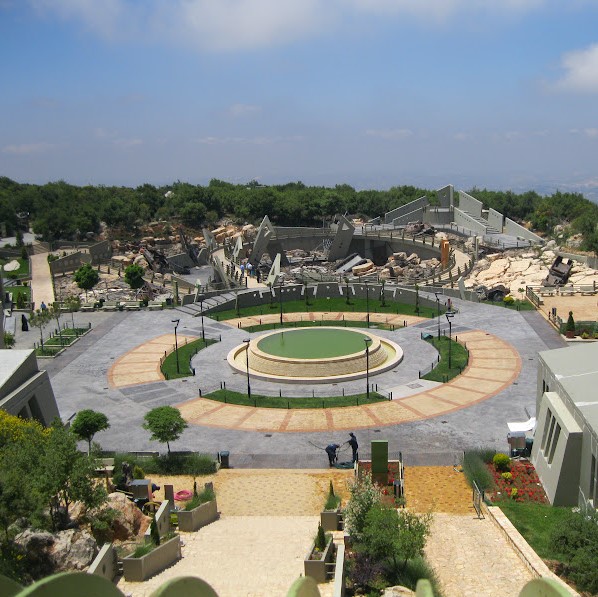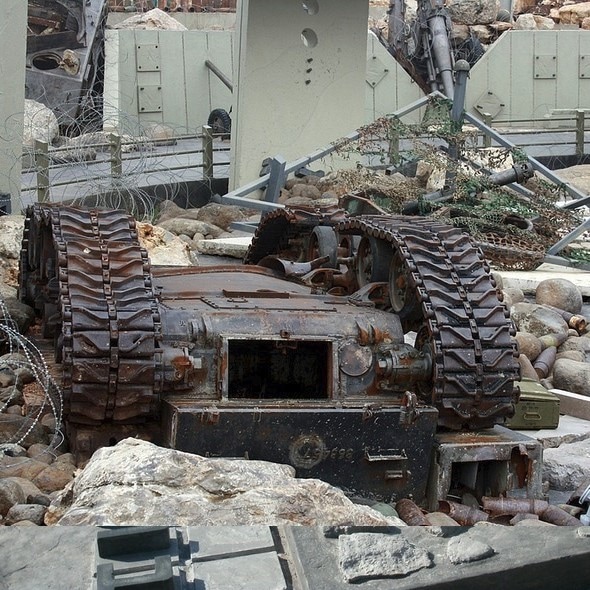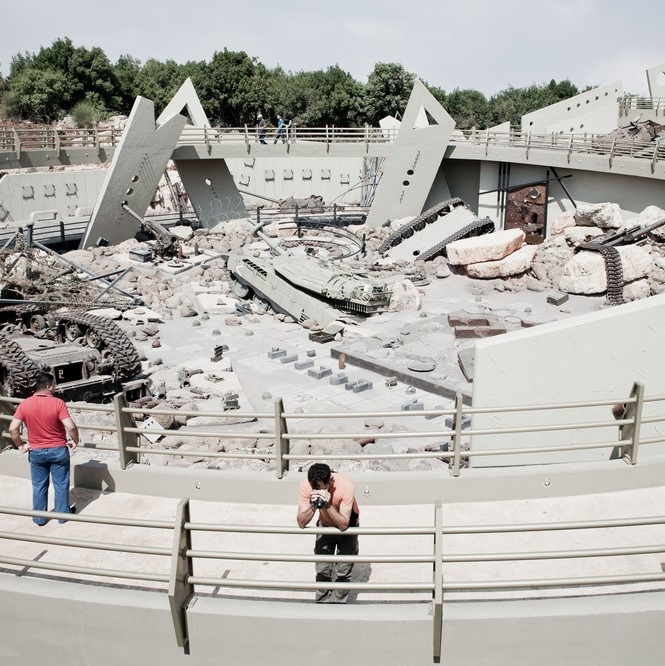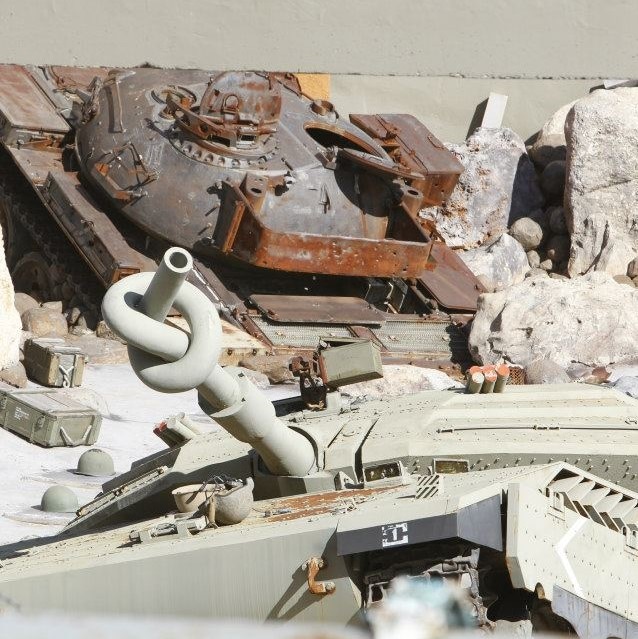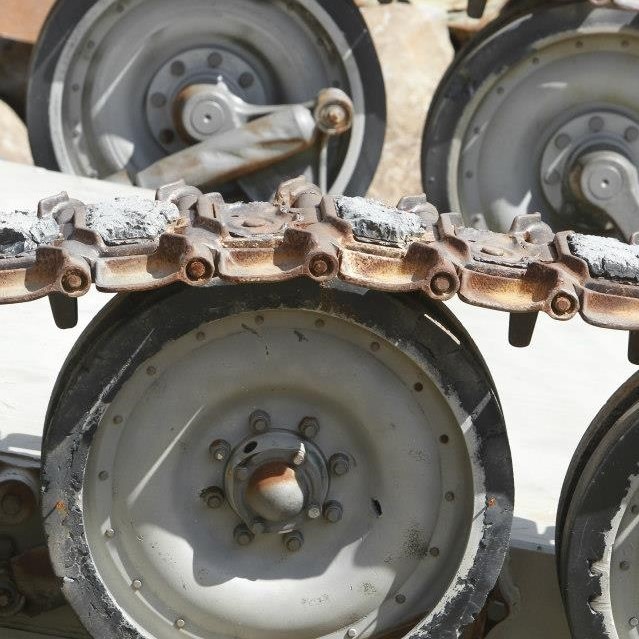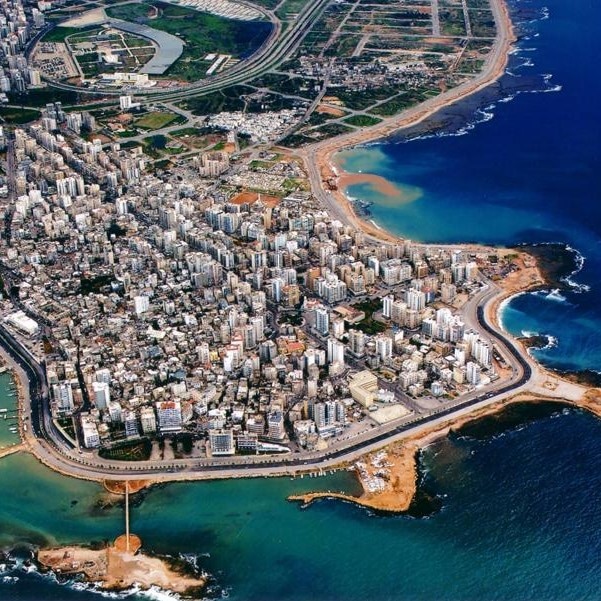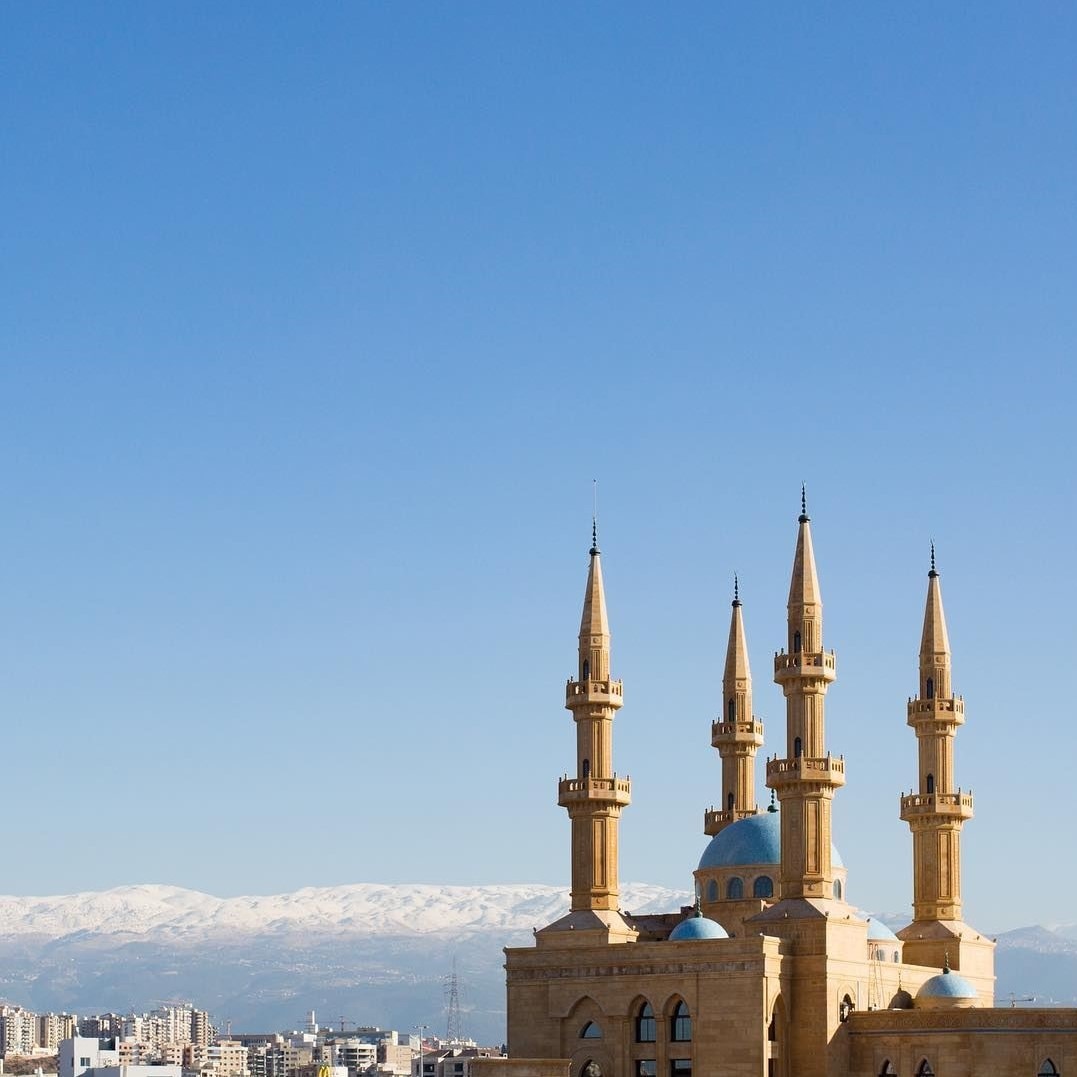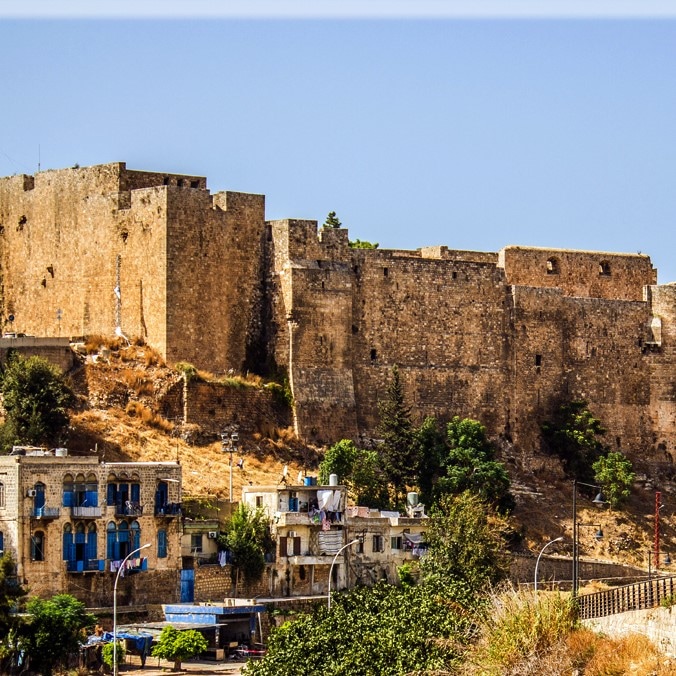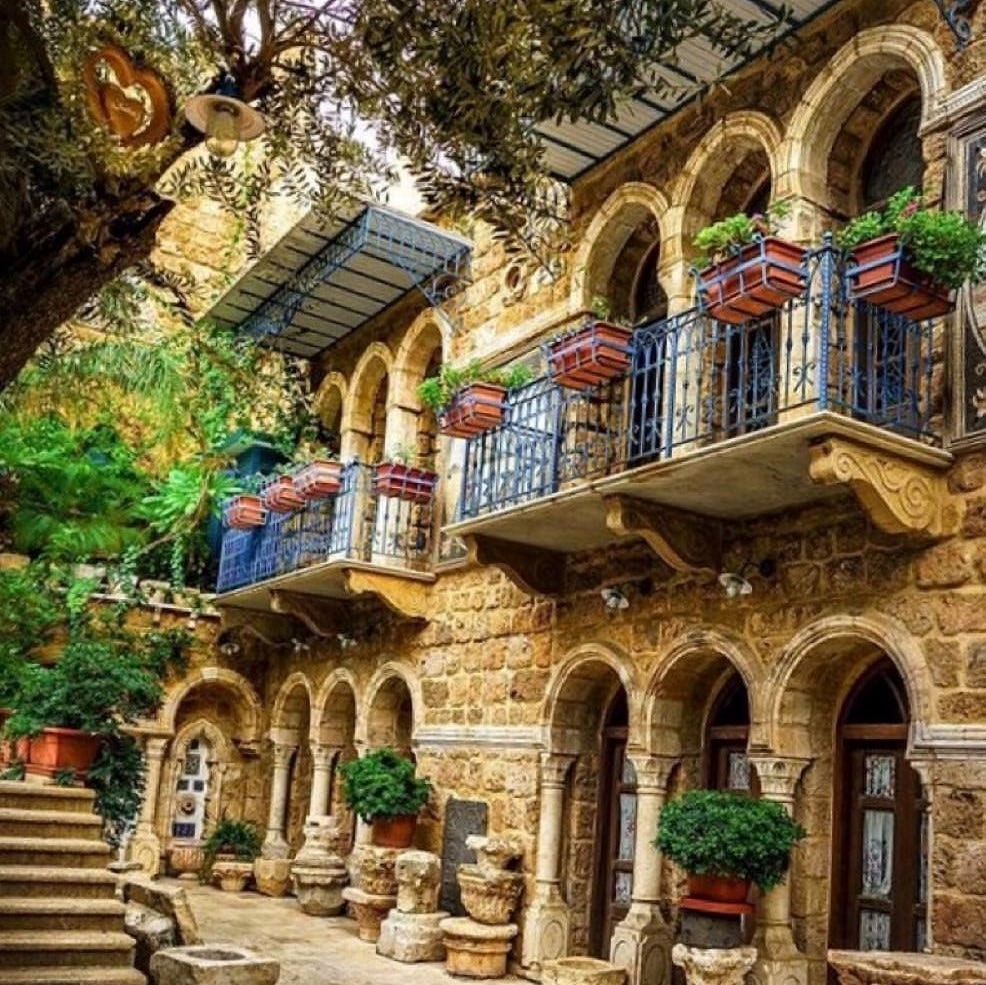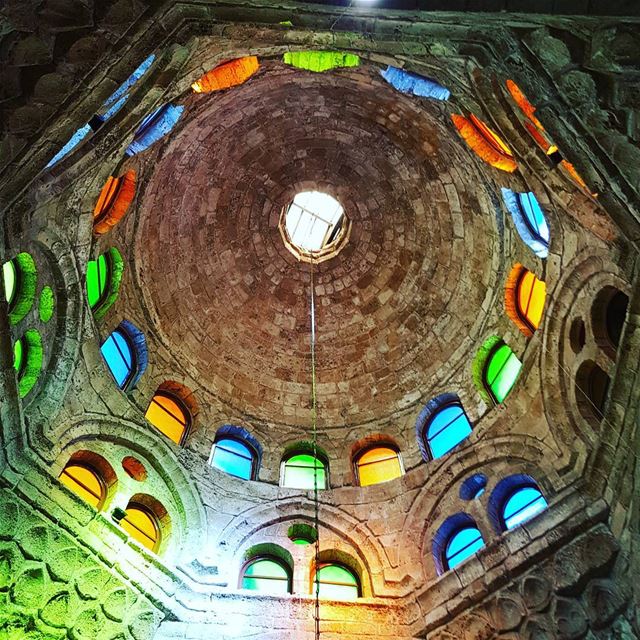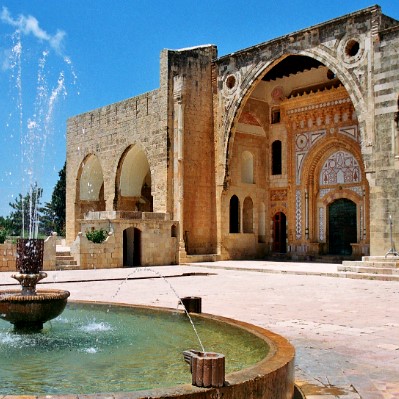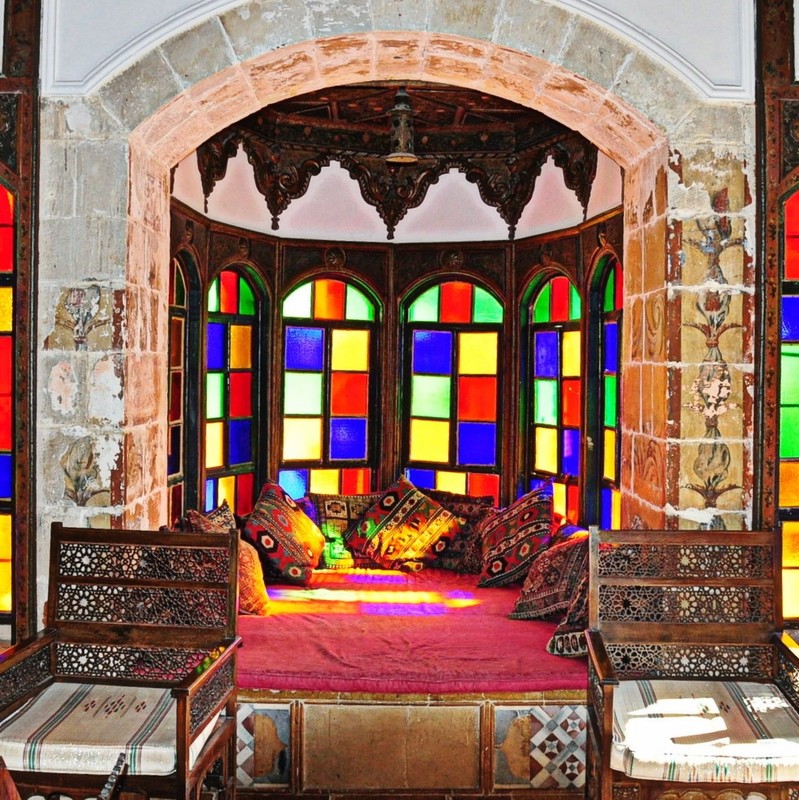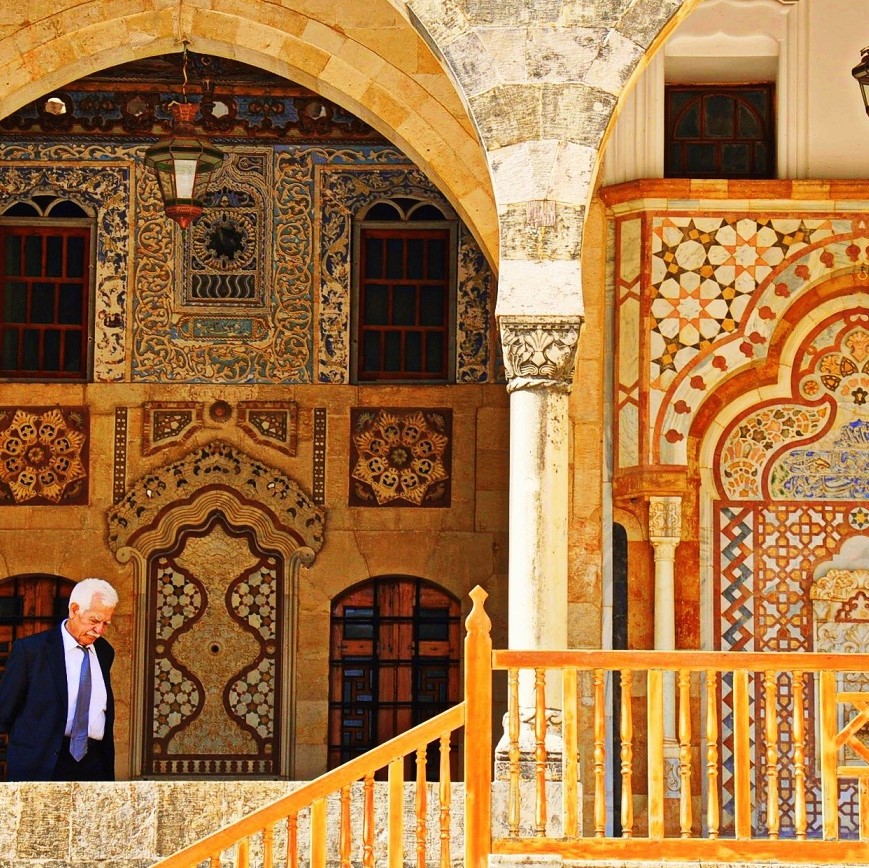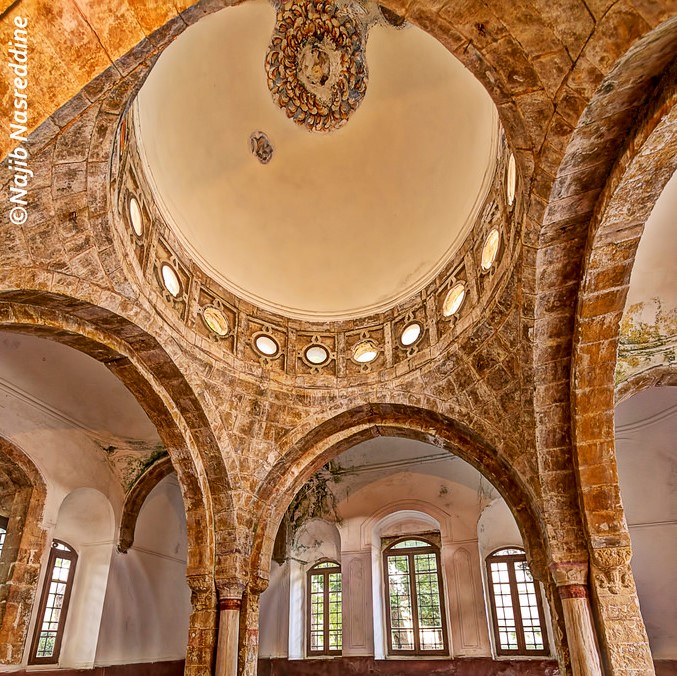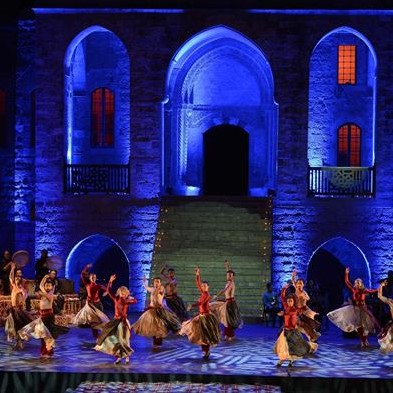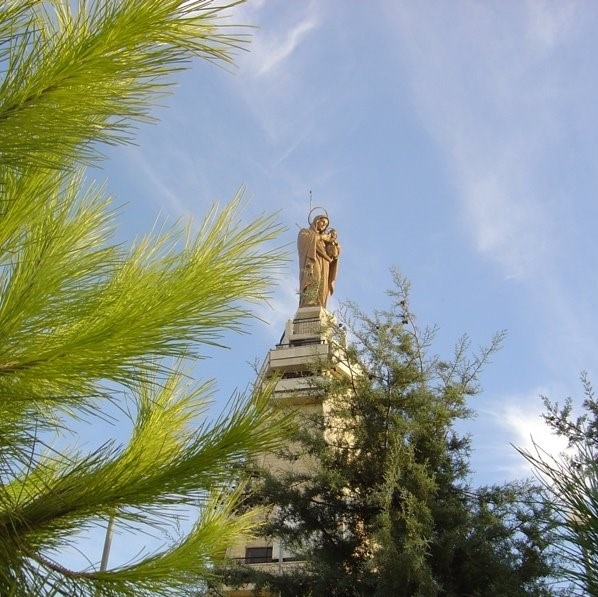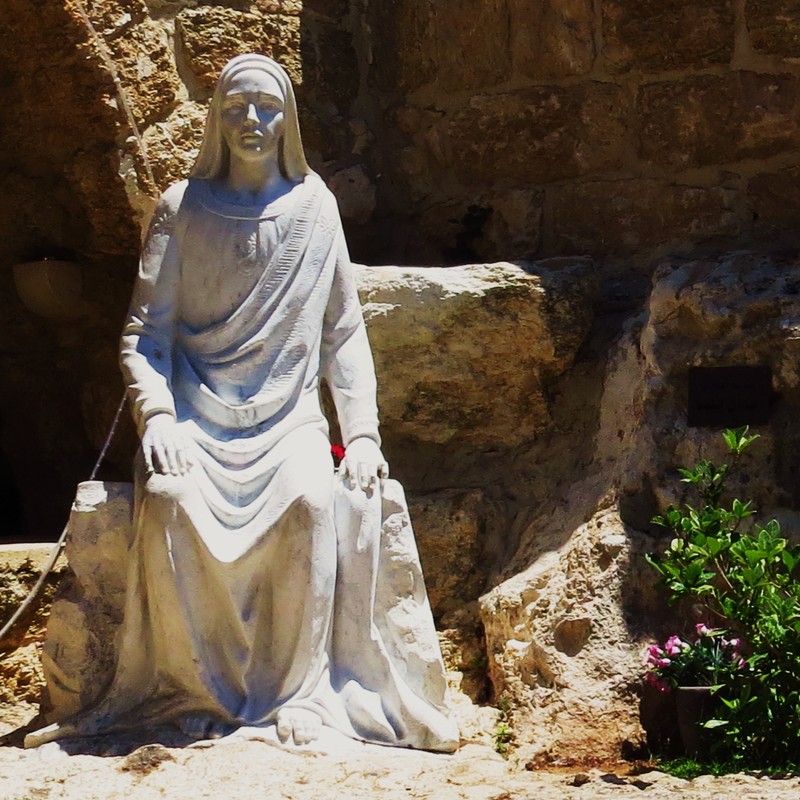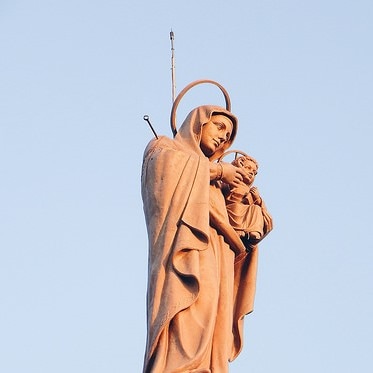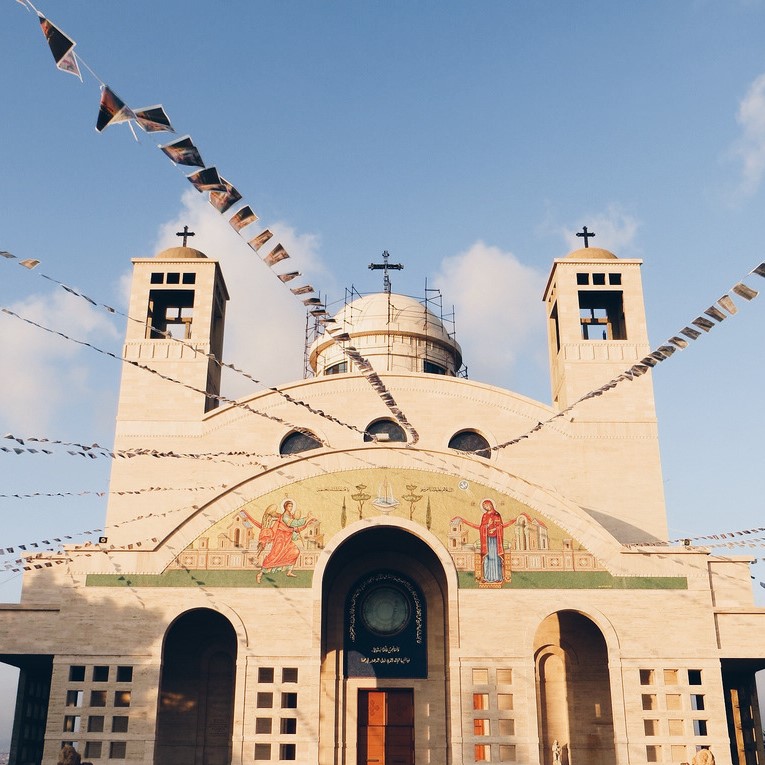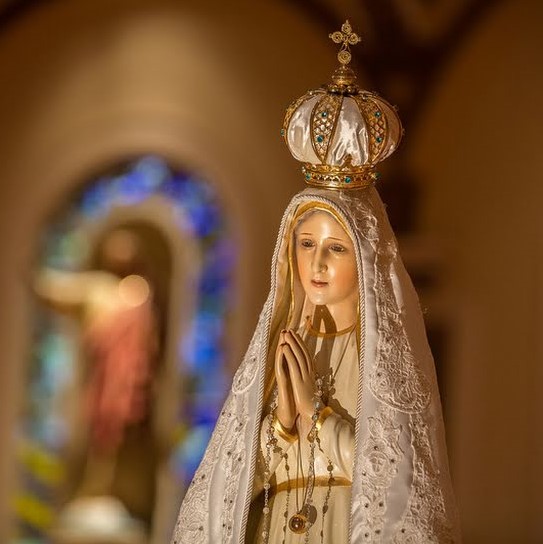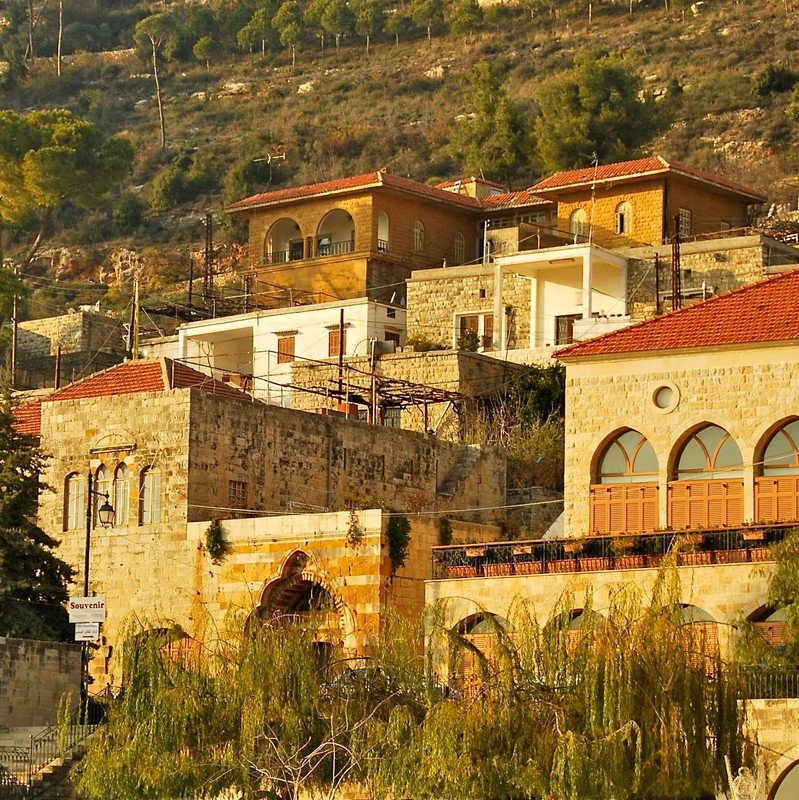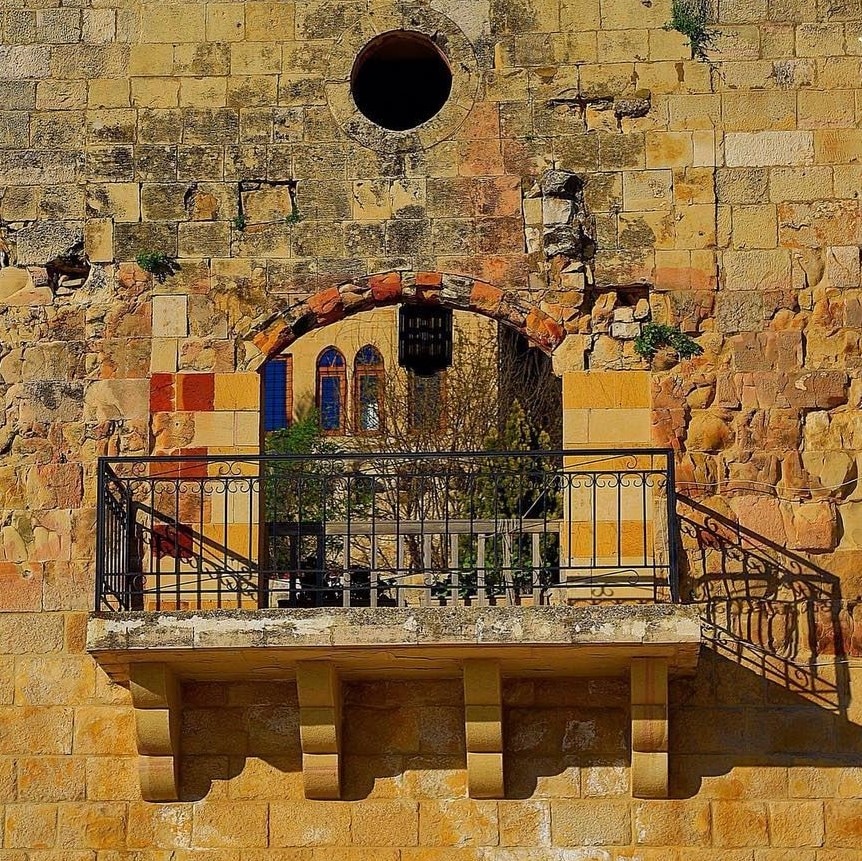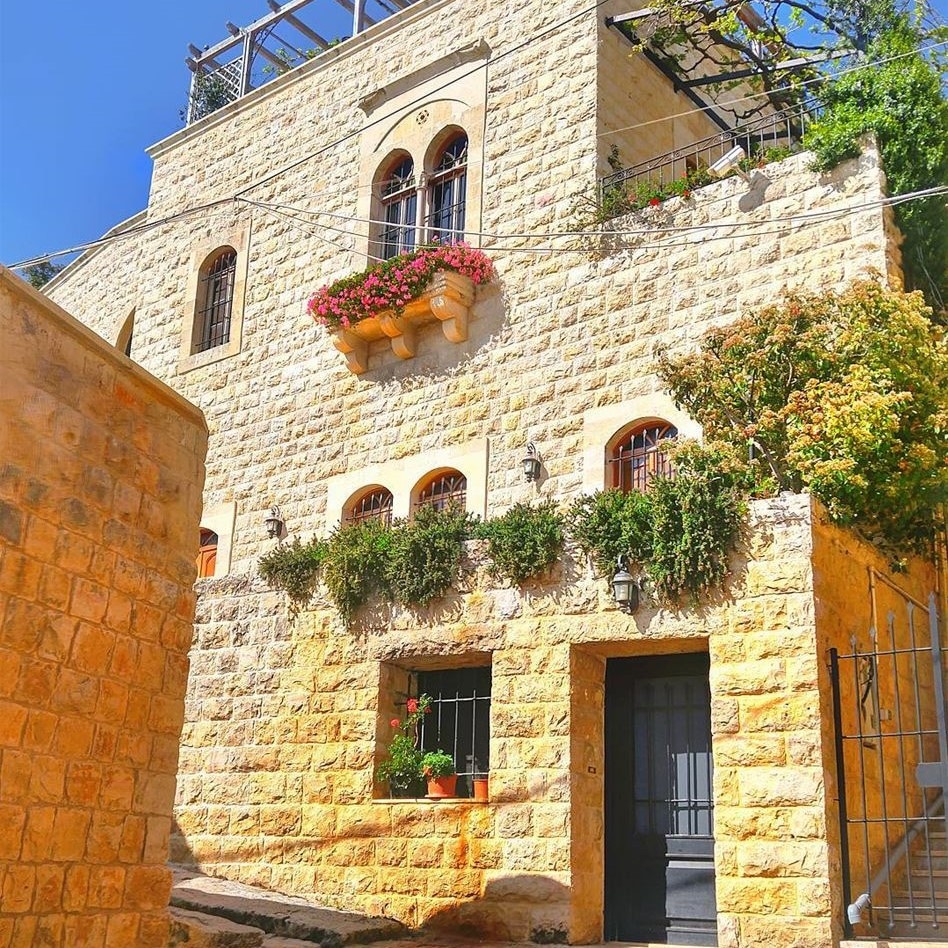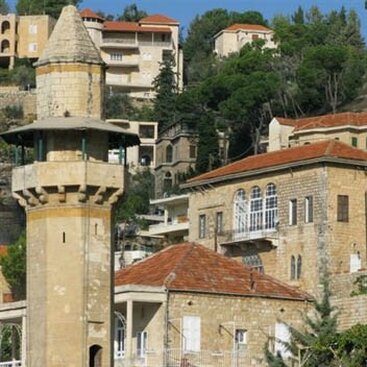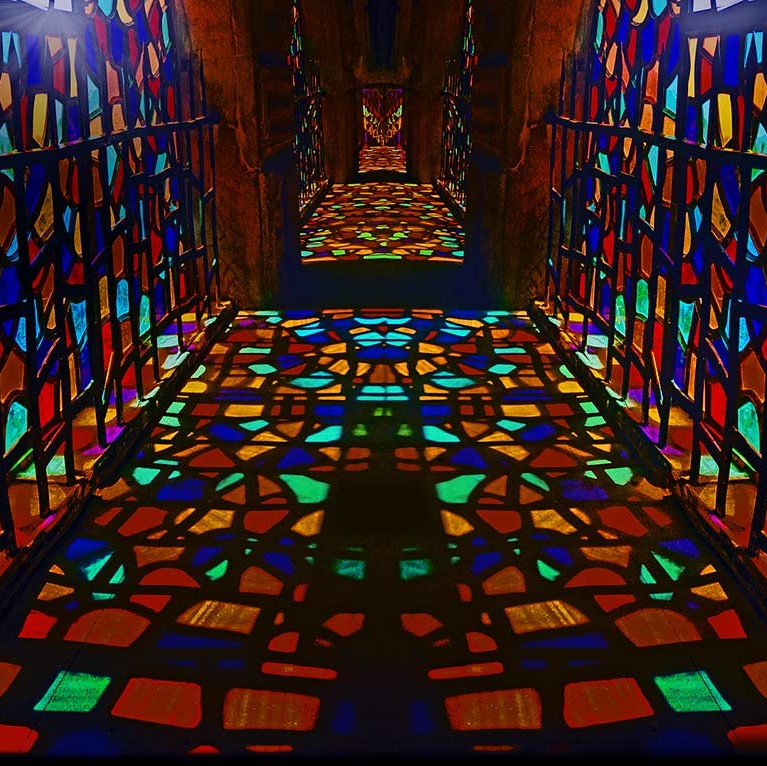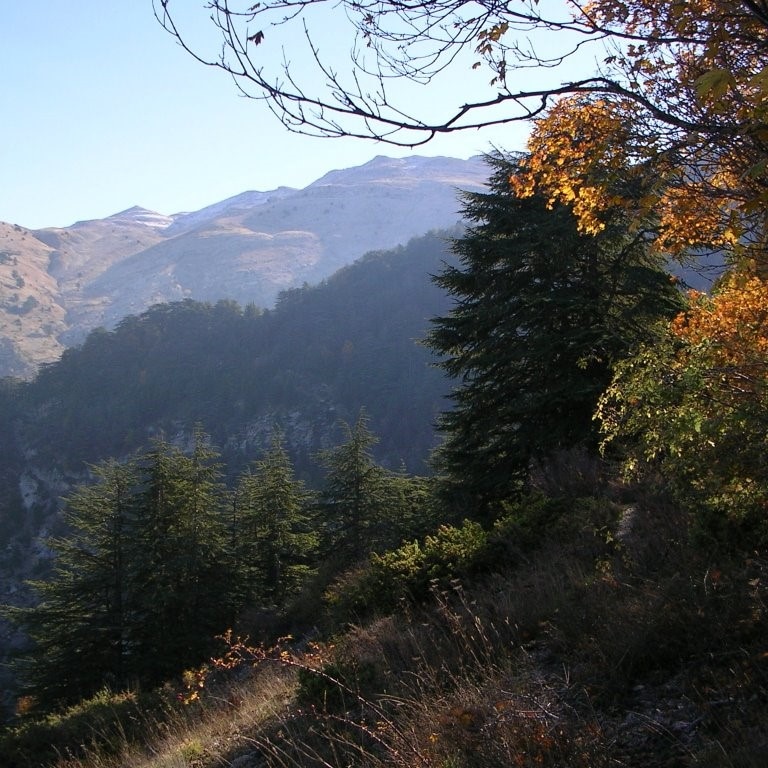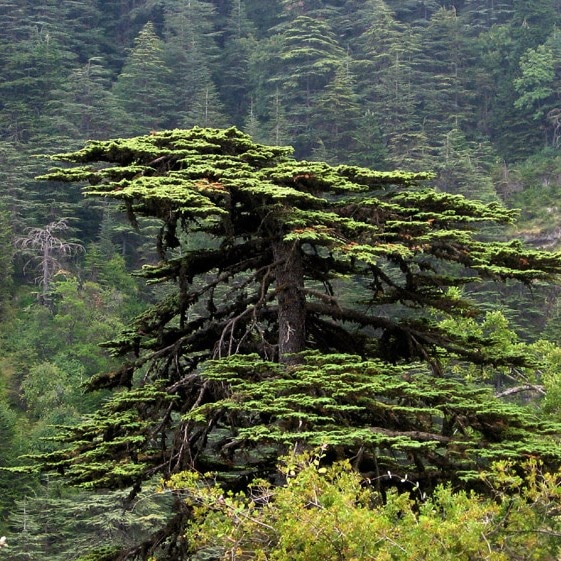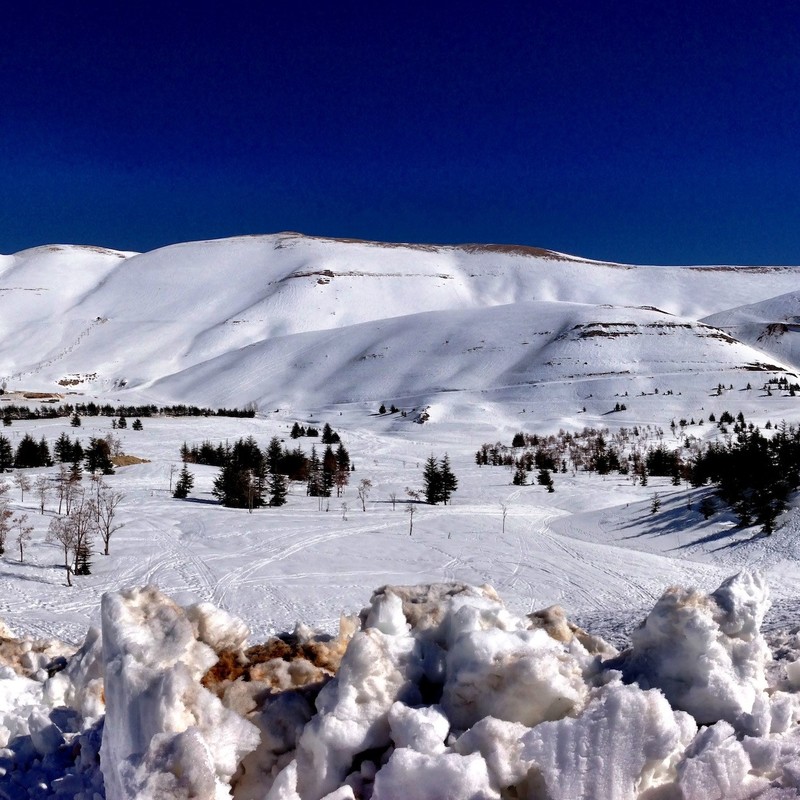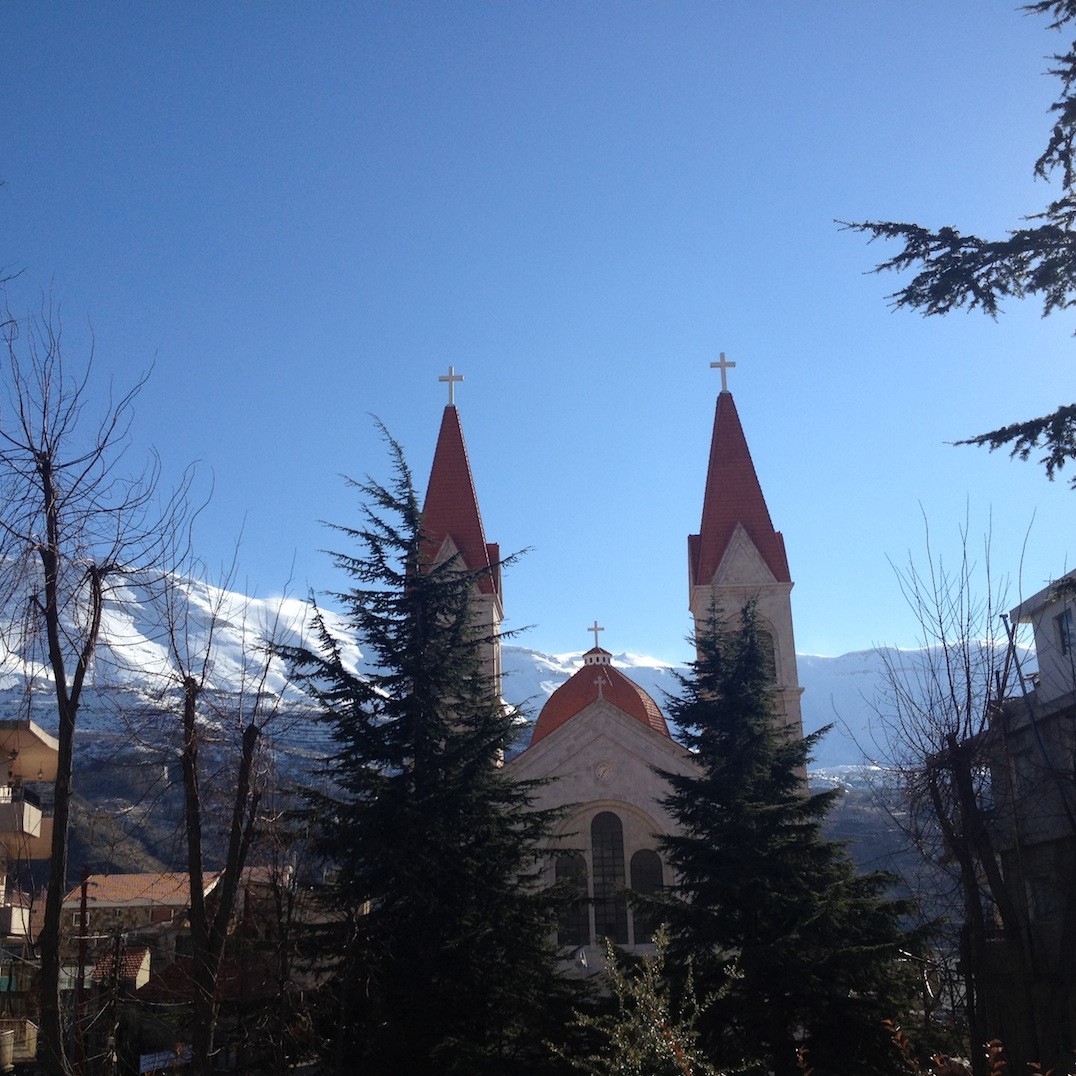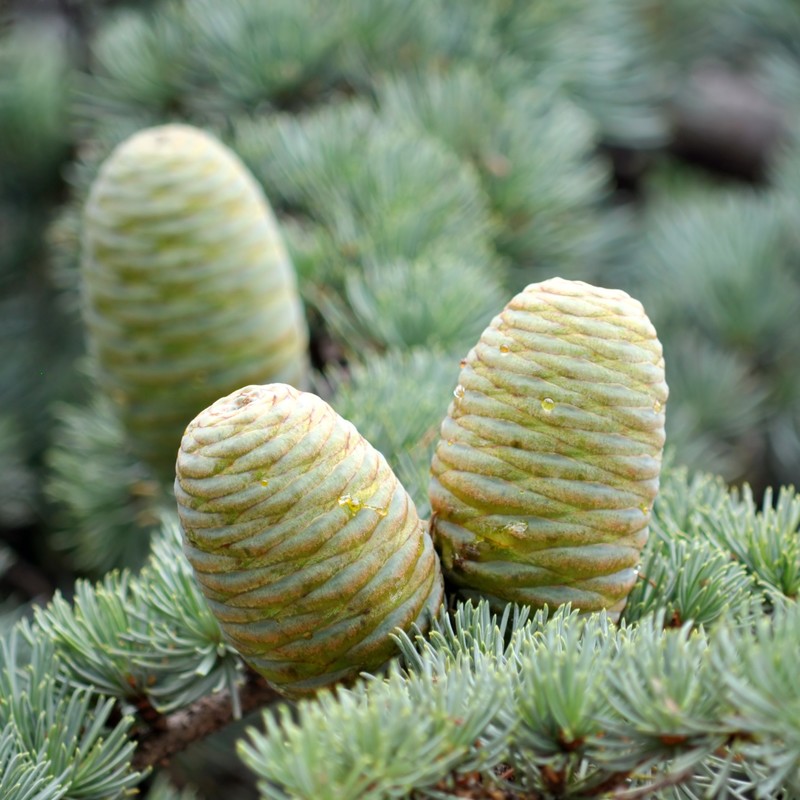Lebanon
|
Lebanon has been called many things such as the "The land of Milk & Honey", "Pearl of the Middle East" and the "Switzerland of the East." Everyone from the East and the West has enjoyed living here, because of the country's natural beauty, pleasant climate, rich culture, open social system, and active financial markets. |
Lebanon's is a sovereign state in Western Asia. It is bordered by Syria to the north and east and Palestine to the south, while Cyprus is west across the Mediterranean Sea. Its location at the crossroads of the Mediterranean Basin and the Arabian hinterland facilitated its rich history and shaped a cultural identity of religious and ethnic diversity. At just 10,452 km2 (4,036 sq. mi.), it is the smallest recognized country on the entire mainland Asian continent.
Lebanon is famous for its exquisite beauty, diversity, glamor, European flavor, and hospitable people. Its rich culture and history have placed it on the “must see” list of every world traveler. Lebanese cities are among the most famous names in ancient history and majestic ruins still stand today as a testimony to the greatness of people who lived in this land.
The nature of Lebanon makes it the only country in the Arab world that embraces four seasons yearly. No matter what the season, there is always something special to enjoy.
In the winter season, ski resorts offer tourists slopes that are comparable to even the best resorts in Europe.
In the summer, international festivals all over the country – in Baalbek, Byblos, Beiteddine, Batroun, and Jounieh – bring together Lebanese and foreign artists to perform in stunning archaeological and historical sites. These events have given Lebanon an enviable place on the cultural map of the Middle East.
Lebanon has it all!
Visitors to Lebanon enjoy outstanding service in world-class hotels and resorts, restaurants, casinos, theaters, cinemas, and nightclubs and luxury shopping centers along with advanced communication and transportation services. Lebanon also offers access to cutting-edge medical centers.
Lebanon is famous for its exquisite beauty, diversity, glamor, European flavor, and hospitable people. Its rich culture and history have placed it on the “must see” list of every world traveler. Lebanese cities are among the most famous names in ancient history and majestic ruins still stand today as a testimony to the greatness of people who lived in this land.
The nature of Lebanon makes it the only country in the Arab world that embraces four seasons yearly. No matter what the season, there is always something special to enjoy.
In the winter season, ski resorts offer tourists slopes that are comparable to even the best resorts in Europe.
In the summer, international festivals all over the country – in Baalbek, Byblos, Beiteddine, Batroun, and Jounieh – bring together Lebanese and foreign artists to perform in stunning archaeological and historical sites. These events have given Lebanon an enviable place on the cultural map of the Middle East.
Lebanon has it all!
Visitors to Lebanon enjoy outstanding service in world-class hotels and resorts, restaurants, casinos, theaters, cinemas, and nightclubs and luxury shopping centers along with advanced communication and transportation services. Lebanon also offers access to cutting-edge medical centers.
Beirut
Beirut is built on a rocky promontory, a site also occupied by pre-historic man. In ancient times it was overshadowed by more powerful neighbours, but when the city-states of Sidon and Tyre began to decline in the first millennium BC, Beirut acquired more influence. It was not until Roman times, when it was made a Roman colony in about 15 BC, that Beirut became an important port and cultural center. During the roman and Byzantine eras it was distinguished for its Law School, whose professors helped draft the famous Justinian Code.
Beirut was destroyed by devastating earthquake in 551 AD. A century later it was occupied by the Moslem armies and in 1109 it fell to the Crusaders. The city remained in Crusader hands until 1291, when it was conquered by the Mamlukes.
In 1516 the 400-year Ottoman rule began. Later in 17th century, Beirut knew a period of great prosperity under the government of Emir Fakhreddine II. Then, with the break-up of the Ottoman empire at the end of World war I, the city became the capital of modern Lebanon.
Today’s Beirut, with its million plus inhabitants, remains the cultural and commercial center of the country. The war-ruined city center is being reconstructed under a 25 year project that envisages a new modern city that will also retain its familiar oriental flavor.
Such landmarks as Martyrs’ Square, the souks (covered markets) and the parliament Building, are part of the design, which covers 1-8 million square meters.
In extensive archaeological investigations, historical periods ranging from Canaanite (3000 – 1200 BC) to Ottoman (1515 – 1918 AD) have been revealed.
In May 2015, Beirut was officially recognized as one of the New7Wonders Cities together with Vigan, Doha, Durban, Havana, Kuala Lumpur, and La Paz.
Baalbek
Baalbek is situated in the eastern part of Lebanon about 85 kilometers from Beirut, where the Beqaa' plain lies enclosed by two mountain ranges setting off the monumental proportions of the temples which proclaimed the power and wealth of Imperial Rome.
The Bacchus temple is generally accepted as the undoubted masterpiece and has been extremely well preserved because of the Arab fortifications built around the temple. It is linked to the temple of Jupiter with access by an imposing staircase and a colossal door decorated with nymphs and mythological deities.
A short distance away stands another true jewel of Roman architecture, the temple of Venus and in another section is the 8th century Umayyad mosque.
The town of Baalbeck has major remains from Islamic times, including the Grand Mosque, built by the Omayyads with material borrowed from ancient monuments, and another mosque built in Mamluke times near the spring of Ras el-Ain.
Baalback has been named a World Heritage Site by UNESCO.
Byblos
It also gave its name to the Greek word for a book ” biblos ” on account of its papyrus fields (papyrus was used for making writing paper in ancient times). It is also the birthplace of the alphabet with the oldest known inscriptions of the Phoenician linear alphabet.
Facing the sea, the site includes a number of Phoenician and Canaanite temples, ancient city walls, the foundations of several stone-age houses and a number of Roman remains. Probably the most imposing ruin is the Crusader castle, built in the thirteenth century, which is bordered by a row of colonnades at the foot of which are some Phoenician sarcophagus (decorated stone coffins as used in ancient times for a dead body).
Byblos is also known for its picturesque medieval port, where you can see quaint fishing boats gently rocking on the waves.
Within the citadel area of Byblos in Jebil is a parade of attractively renovated old buildings, many of which are now used as shops selling anything from picture postcards and books to pottery and locally designed jewellery.
It is famous for its fish restaurants, which serve up fresh red snapper and sea bass to an international clientele, and party yachts Cruise into its spectacular harbor at sundown. The city’s revived night life is adding a new dimension to the already powerful lure of its 7,000-year-old history and ruins.
It also gave its name to the Greek word for a book ” biblos ” on account of its papyrus fields (papyrus was used for making writing paper in ancient times). It is also the birthplace of the alphabet with the oldest known inscriptions of the Phoenician linear alphabet.
Facing the sea, the site includes a number of Phoenician and Canaanite temples, ancient city walls, the foundations of several stone-age houses and a number of Roman remains. Probably the most imposing ruin is the Crusader castle, built in the thirteenth century, which is bordered by a row of colonnades at the foot of which are some Phoenician sarcophagus (decorated stone coffins as used in ancient times for a dead body).
Byblos is also known for its picturesque medieval port, where you can see quaint fishing boats gently rocking on the waves.
Within the citadel area of Byblos in Jebil is a parade of attractively renovated old buildings, many of which are now used as shops selling anything from picture postcards and books to pottery and locally designed jewellery.
It is famous for its fish restaurants, which serve up fresh red snapper and sea bass to an international clientele, and party yachts Cruise into its spectacular harbor at sundown. The city’s revived night life is adding a new dimension to the already powerful lure of its 7,000-year-old history and ruins.
Jeita Grotto
Its elegant natural stone sculptures are seen to their best advantage because of the ingenious lighting system installed, that appear to reveal eerie and fascinating shapes as well as amazing designs and sounds formed by the stalactites and stalagmites.
Jeita consists of an upper grotto which can be explored by foot and a lower one with an underground lake that can be seen by boat. The caves are very well managed and are easily accessible to children and older people. A small train carries visitors between the levels of the two galleries and there is a restaurant, snack bar and projection room at the site.
After many years of exploration, Lebanese speleologists have penetrated 6.200 meters from the entry point of the grotto to the far end of the underground river and 1,100 meters of the upper galleries. The main source of the Dog River (Nahr el Kalb) rises in this cave.
The site opens every day from 9 AM till 7 PM in spring and autumn (except on Mondays). In winter it opens from 9 AM till 5 PM (except on Mondays). The site closes from January till the beginning of February.
Harissa
The name Harissa is drawn from the word Haras, meaning a sharp blade, or sheer edge, in Hebrew and Arabic, a reference to the area's precarious position above the sea.
Harissa is also a stunning, moving, fascinating site in Lebanon. In the mountains above Beirut, or to be more precise Jounieh, towers a statue. The statue forms the centre of a marian shrine, a Shrine to the Blessed Virgin Mary, patron saint of Lebanon.
The statue was made in France, of bronze, then painted in white. Weighing 20 tons, it was erected on the top of the hill 25km from Beirut and taking seven sections to get the whole thing together. It provides a startling landmark, 650m above sea level, visible from miles around. Inaugurated in 1908, it's been an attraction for generations of pilgrims since.
The statue of the Virgin dominates a sanctuary (a chapel in the pedestal). A panoramic view is guaranteed at the top of the statue. A cable car links the coast to the Belvedere.
Inside the statue's base there is a small chapel. Among other churches of various denominations, it is worth mentioning the Byzantine-style, Melkite Greek Catholic Basilica of St. Paul, located to the south. The Papal Embassy, as well as the residences of four Eastern Catholic cardinals church, are in the vicinity of Harissa and Our Lady of Lebanon.
The site was visited by both Pope Jean Paul II and Pope Benedict XVI.
Anjar
In contrast with other historic cities in Lebanon that are still inhabited, such as Tyre, Saida, Beirut and Byblos, Anjar’s glory did not last long because of the Umayyad’s short-lived 100-year rule in the 8th century.
This iconic site once housed three grand palaces, Roman-inspired public baths, a residential area, a mosque and a commercial center. Its grand architectural scheme is made to be an almost perfect quadrilateral, with perpendicular streets and alleys that intersect at the city center. This tidy division into four quarters is based on earlier Roman city planning. Because Umayyad history is steeped with war and conquest, Anjar’s first people would have needed the defense and security of its tall walls and towers, which you’ll notice, are abundant features of the city’s architecture.
Most striking about the ruins are the fragile and slender columns that stand in sharp contrast to the massive and bulky anti-Lebanon mountain range. The city also lies near gushing springs that feed the Bekaa’s most vital water source, the Litani River.
Anjar has been classified as a World Heritage Site by UNESCO.
There are a number of restaurants close to Anjar that offer fresh trout plus a wide array of Lebanese and Armenian dishes. Some of the restaurants are literally built over trout ponds. Anjar has no hotels, but lodging can be found in Chtaura 15 kilometers (nine miles) away.
In contrast with other historic cities in Lebanon that are still inhabited, such as Tyre, Saida, Beirut and Byblos, Anjar’s glory did not last long because of the Umayyad’s short-lived 100-year rule in the 8th century.
This iconic site once housed three grand palaces, Roman-inspired public baths, a residential area, a mosque and a commercial center. Its grand architectural scheme is made to be an almost perfect quadrilateral, with perpendicular streets and alleys that intersect at the city center. This tidy division into four quarters is based on earlier Roman city planning. Because Umayyad history is steeped with war and conquest, Anjar’s first people would have needed the defense and security of its tall walls and towers, which you’ll notice, are abundant features of the city’s architecture.
Most striking about the ruins are the fragile and slender columns that stand in sharp contrast to the massive and bulky anti-Lebanon mountain range. The city also lies near gushing springs that feed the Bekaa’s most vital water source, the Litani River.
Anjar has been classified as a World Heritage Site by UNESCO.
There are a number of restaurants close to Anjar that offer fresh trout plus a wide array of Lebanese and Armenian dishes. Some of the restaurants are literally built over trout ponds. Anjar has no hotels, but lodging can be found in Chtaura 15 kilometers (nine miles) away.
Ksara
|
Ksara Estate lies In the heart of the Beqaa valley, so named because at the time of the Crusaders it was the site of a fortress. In 1857 the Jesuit Fathers acquired the property when it was already a thriving vineyard and the Jesuits continued the tradition of fine wine making, selling and, I assume, tasting! |
Today Ksara produces wines which achieve a rare balance of fruitiness, delicacy and robustness Known as "Chateau Ksara". The Lebanese are justly proud of the very fine wines they produce with many vintners having won gold medals at international tastings including those having taken place in France.
Château Ksara produces approximately 3 million bottles annually. Its wines are exported to over 42 countries. Main export markets include Europe, USA, Canada, Japan, Hong Kong, Singapore, Brazil, Africa, Australia and Arab Countries. So, it can be found and purchased in many different countries.
Qadisha Valley
Perched on its edges eight towns, each with its own long history. Qadisha Valley has sheltered Christian monastic communities for many centuries, and you’ll find caves and sanctuaries that were inhabited from the 3rd century B.C. until the Roman period.
Hermitages, rocky monasteries and churches are scattered across the valley, many of which are easily accessible by foot along the breathtaking paths that line the steep embankments. The most important is Deir Qannubin, which at the end of the 15th century became the residence of the Maronite patriarchs. Also, the monastery of Qozhaya where there is a printing press dating from 1871, a reminder that this was the site of Lebanon's first printing press, imported in the 16th century.
On the old road between the Cedars and Bsharreh is the small but beautiful QADISHA GROTTO where cold waters thunder down from snow-fed springs
The serenity of Qadisha, fragrant with wild flowers and aromatic plants, make it a peaceful haven that even today deserve the name "Holy Valley".
UNESCO classified the valley as a World Heritage Site out of consideration for both its cultural and natural landmarks. The valley is home to thousands of varieties of plants and animals, some 10 percent of which are unique to Lebanon.
Sidon
|
Saidon, The Lebanese city, has remained politically and economically significant since ancient times. The city was invaded in the 13th century by crusaders who built a castle on a hill overlooking Saidon which is still standing and silently watching over the city as it has been doing in the last eight centuries. |
Saidon, also known as Saida, has been under the rule of various empires and states. Ottoman Turks conquered the coastal city in the 16th century, which was a considerable step for controlling Mediterranean trade routes. Built on a small island, the castle is 30 km south of Beirut. Having survived many earthquakes and military attacks, the castle has stood the test of time.
On the island, which is linked to the city with an 80-meter road, there used to be a palace of Phoenician King and a temple dedicated to Phoenician gods. When the city was besieged by the Assyrians, the people found a safe haven in the castle. The palace and temple were demolished due to earthquakes. The castle was heavily damaged during the campaign of the Mamluke Empire in the 15th century, but the Mamlukes who captured the city restored the castle.
The castle was used the early years of Ottoman rule in the city, however, after its strategic importance started to diminish, it was abandoned. By the 17th century, the castle was in ruins. However, it was soon renovated by the Ottomans and a mosque was built inside it. Today the castle has two towers. The columns, which reflect a Roman style, indicates the castle's extensive history. The tower on the left is seemingly very well preserved and there is also a room inside it.
The other tower is mostly in ruins, but the mosque built in the Ottoman period was able to survive throughout the years. From the castle, visitors are able to enjoy an unprecedented view of both Saidon port and the city. The castle has silently been witnessing the city's social, political and architectural transformation for eight centuries.
Saidon’s old town easily rivals its counterparts across the region. Extraordinarily well preserved, the cool, winding streets of the souk retain their ancient origins while functioning as an actual market where locals still go to buy household goods. You’ll find bakers and sweet shops, green grocers and butchers, and a whole host of other goods, including, of course, souvenirs.
Tyre
It was governed and then destroyed by so many rulers including King Hiram in the 10th century, when the city experienced its most prosperous period. This caused jealousy amongst other great conquerors of the time including Nebuchadnezzar, the King of Babylon, who besieged Tyre for 13 years, after which it was the turn of Alexander the Great, who took only seven months to destroy and burn the city.
On what was originally the island (the city was initially made up of two parts – the coastal city and some small islands) is a Roman city with streets paved in mosaics and bordered by columned porticoes, whilst a short distance away are the remains of what was an imposing cathedral built by the Crusaders.
Within the ruins there is a Roman road dominated by a triumphal arch taking you into an immense Roman hippodrome nearly 500 meters long. Here extends an enormous necropolis with many impressive sarcophagi, amazingly decorated.
In 1979 UNESCO made Tyre a World Heritage City.
The best-known episode in the history of Tyre was its resistance to the army of the Macedonian conqueror Alexander The Great who took it after a seven-month siege in 332. He completely destroyed the mainland portion of the town and used its rubble to build an immense causeway (some 2,600 feet [800 metres] long and 600–900 feet [180–270 metres] wide) to gain access to the island section.
Mleeta
The museum - was opened in 2010. From the first withdrawal of the Israeli occupation in 1985, until its final withdrawal in 2000, this 60,000 square meter area served as the strategic and military base of the resistance against Israel. It was the position from where thousands of military missions were conducted inside the Israeli occupation zone.
The museum was created in memory of the faith, endurance and free will of men, fighting against the Israeli occupation of their country. Symbolizing the defeat, it displays captured Israeli tanks, Jeeps, helicopter parts, bombs, weapons and other Israeli army equipment.
You can visit the caves and forest from where the resistance operated and see displays of armed tanks, rockets, bombs and guns used in the fight against the enemy
Mleeta museum is a deeply political attraction, there is nothing quite like it in the whole of Lebanon.
Tripoli
Tripoli was situated around the Al-Mina port district. After the city’s destruction by the Mamlukes in 1289, it was replaced by a new town near the hill of the Crusader Castle of Raymond de Saint Gilles, founder of the Country in Tripoli.
Tripoli is a living museum, preserving important monuments from Crusader, Mamluke and Ottoman times. Distinguished remnants of the Mamluke period include the Great Mosque and the mosque of Taynal, built with elements from ancient and Crusader monuments.
It boasts nearly 40 historical sites that date back to the 14th century, and many of them much earlier than that. From the famous citadel and the continuously operating old souks, replete with traditional craftsmanship, to the plethora of mosques and Hammams,
It holds a string of four small islands offshore, and they are also the only islands in Lebanon; Palm Island or Rabbit Island, The Bakar Island, The Bellan Island, and Fanar Island.
Beyond historical attractions, Tripoli is quite a fascinating city to wander through, full of narrow side streets dense with old apartment buildings. The corniche makes for an attractive stroll leading to the Tower of the Lions and past the harbor where you can easily find boats for hire that will take you to the Palm Island Nature Reserve.
The city also has a wonderful old bone yard from the days when steam trains operated across the country. A few old engines sit rusting away in an abandoned shed and can be seen from the street, along with some rolling stock and a few other outbuildings from the days when the yard was busy sorting cargo and passengers.
Today, Tripoli is a prosperous industrial and business centre. Known as the capital of the north, it is the second largest city in Lebanon.
Beiteddine
The town is located 45 kilometers southeast of Beirut,[1] and near the town of Deir el-Qamar from which it is separated by a steep valley.
Beiteddine (House of Faith) is the name of both the village and the magnificent palace complex that lies within. The palace, perched on a steep elevation, rises from the surrounding landscape like a fairytale vision, a Scheherazadean delight rendered with Italianate flair (in fact, the architects were Italian).
Work began on the palace in 1788 but wasn't completed for another thirty years, during which time Emir Bashir, the Ottoman-appointed governor, oversaw the building of a monument that would reflect the power and glory of his reign.
Visitors to Beitddine have to be grateful for the Ottoman's streak of egomania. The result is one of the finest remaining examples of 19th-century Lebanese architecture, one even the Israeli invasion could not destroy (although it is estimated that ninety percent of the palace's rare and precious contents were lost). Its grand dimensions encompass three main courtyards, huge vaulted stables, small museums, guest apartments, water fountains, marble portals and marquetry, and luxuriously decorated and domed hammams (bathhouses).
It also has a collection of beautiful Byzantine mosaics. Many were excavated from the ancient city of Porphyrion and kept for safe-keeping at Beitddine throughout the war. It is thought to be one of the most spectacular mosaic collections in the eastern Mediterranean, if not the world.
Maghdouche
It is a cozy village of private gardens, orchards, olive trees and vineyards. It’s well-known for its orange blossom and rose waters.
At the entrance of the village, there is a high tower with a statue of the Virgin on the top. This is the sanctuary of “Our Lady Of Mantara”.
The main place of the sanctuary is a natural cave, where according to tradition, Virgin Mary waited for her son Jesus Christ while he was preaching in Sidon, a pagan Phoenician town where Jewish woman could not go. The old Roman road from Jerusalem to Sidon passed through Caesarea Philippi (now called Marjayoun) and through the village of Maghdouche. That is why it was called Mantara which means “awaiting”.
The main road of Maghdouche offers sweeping vistas of the valley to the north as you move into the hinterland of the south, while the village center is knotted with traditional houses and shops.
At the entrance of the village, there is a high tower with a statue of the Virgin on the top. This is the sanctuary of “Our Lady Of Mantara”.
The main place of the sanctuary is a natural cave, where according to tradition, Virgin Mary waited for her son Jesus Christ while he was preaching in Sidon, a pagan Phoenician town where Jewish woman could not go. The old Roman road from Jerusalem to Sidon passed through Caesarea Philippi (now called Marjayoun) and through the village of Maghdouche. That is why it was called Mantara which means “awaiting”.
The main road of Maghdouche offers sweeping vistas of the valley to the north as you move into the hinterland of the south, while the village center is knotted with traditional houses and shops.
Deir El Qamar
Its beautiful, narrow cobblestone streets, outdoor stone benches, and fragrant gardens blossoming with roses and jasmine are but a few of the town’s scenic attractions.
From the 16th to the 18th centuries, Deir El Kamar was the residence of the governors of Lebanon, and the town is home to several historic and cultural sites, including the public Midan Square, its 15th-century Fakhreddine Mosque, Fakhreddine II Palace, and the 17th century Deir el Qamar Synagogue, which has been restored and entrusted to the French Cultural Center. Other interesting sites are the Marie Bazz wax museum, an old shoe market, and Al-Qaysariyya, a silk trading market.
The town is also known for its religious landmarks, such as Saydet at-Tella (Our Lady of the Hill), dedicated to the Miraculous Virgin. It was constructed on the ruins of a Phoenician temple for the goddess Astarte (Venus). At the southwestern side of the old city, you’ll come across a paved alley leading to a 17th century church called Saydet al-Wardiya, and an arched passage leading to St. Elias Church, built in 1741, for the town’s Greek Catholic community. Its altar, façade and gate are made of white and pink stones. Inside it lays the tomb of the poet Nicolas al-Turk.
The Cedars
The most beautiful cedar trees are those from Bsharreh, many of which are estimated to be nearly 2,000 years old having reached a height of some 35 metres with trunks in the region of 14 meters around. There is no more beautiful site than to see these trees with their branches positioned outward with layers of snow as if in prayer!
Cedars are among the last survivors of the immense forests that lay across Mount Lebanon in ancient times. The citizens of ancient Byblos, Tyre and Sidon used cedrus libani to build houses and fashion masts for their ships. Salomon imported wood from here to build his temple in Jerusalem.
Cedars are among the last survivors of the immense forests that lay across Mount Lebanon in ancient times. The citizens of ancient Byblos, Tyre and Sidon used cedrus libani to build houses and fashion masts for their ships. Salomon imported wood from here to build his temple in Jerusalem.
